#NikoEconomos
Text
Madrid Week 3: Flashbacks
Hola a todxs! It’s Niko back with week 3 of studying abroad in Madrid. Time is STILL passing by really fast and slow at the same time, so I'll talk about it again — I’ve been here less than a month and it’s felt like half a year, but the days go by quickly. I don’t think that will stop anytime soon, but I’m here for it. More perceived time = more life lived, and I hope that my weeks don't start blending together anytime soon.
As promised in week 2, I wanted to spend this blog talking about my trip to Granada last weekend. Granada is a small Spanish town in the southern region of Spain called Andalucía. It’s got a population of around 230,000 people — nearly the exact same as my hometown of Arlington, VA, which is a suburb outside of Washington, DC. However, in place of tree lined residential neighborhoods and modern office buildings, Granada is filled with narrow cobblestone streets bordered by low, densely packed buildings and intensely intricate churches/palaces built hundreds of years ago.

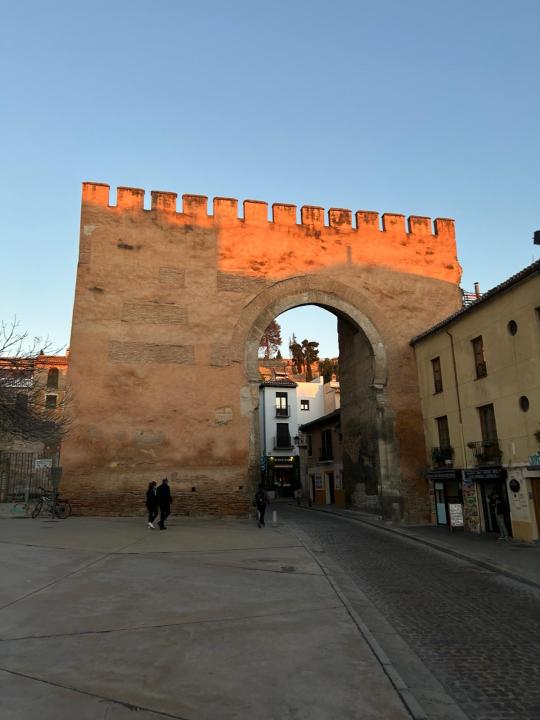

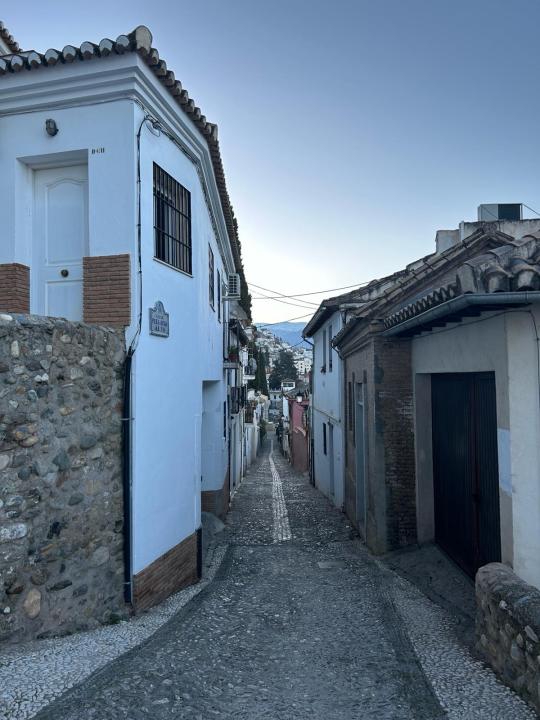
That palace — La Alhambra — is the largest tourist attraction in Granada, and was one of the main reasons I wanted to visit it (also, a big shout out to Emma for hosting me, a friend of mine from high school doing her semester in Granada!!). It’s a massive Moorish palace on a hill that overlooks the entire city. The Moors, who were North African Muslims, conquered much of the Iberian Peninsula in the 8th century. La Alhambra was slowly built between the years 1238 and 1358, during the reigns of Ibn al-Aḥmar and his successors.
With that said, my trip to Granada last weekend was not my first time seeing La Alhambra. As I mentioned briefly in week 0's blog, I took a trip to Spain with my 8th grade Spanish class for a week. That was 7 years ago. We hit most of the main touristic Spanish cities within that time, Granada included.
So, walking through the palace last weekend triggered a slow trickle of distant memories, fuzzy enough that I couldn’t remember details, but potent enough that I could remember how I felt. Some things had changed about the palace, many things stayed the same. I still felt the same sense of awe I did 7 years ago witnessing the incredible detail hand-carved into every surface, or seeing the palace perfectly reflected in a courtyard’s pool. The difference was that this time, I was exploring alone.
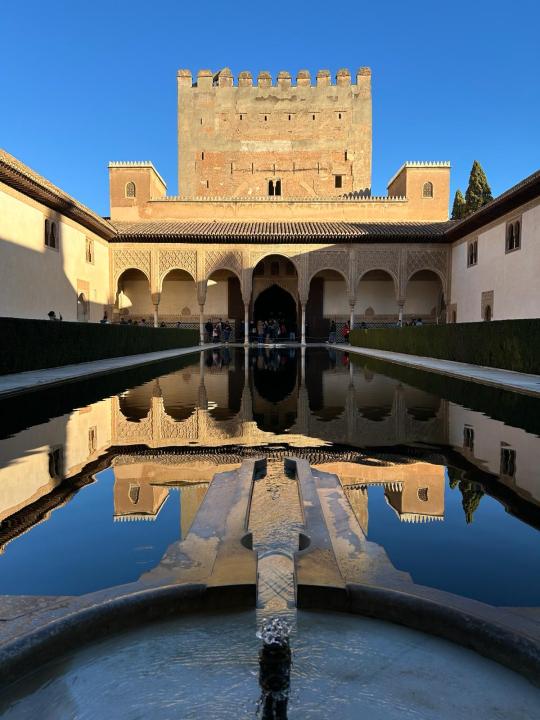
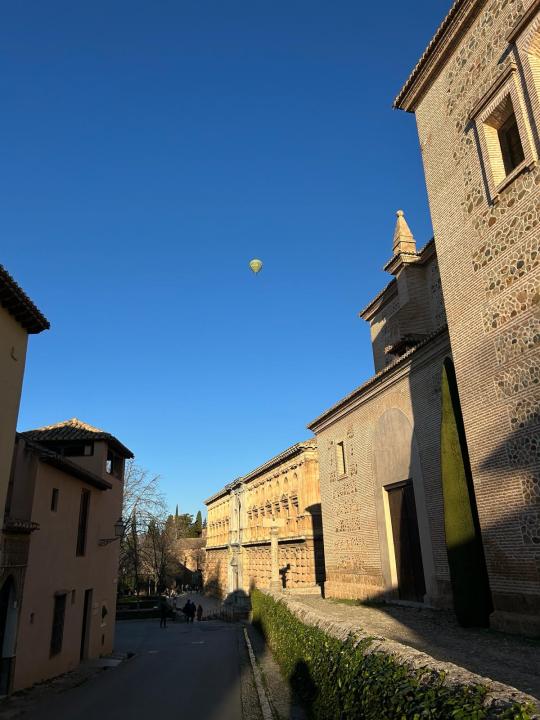
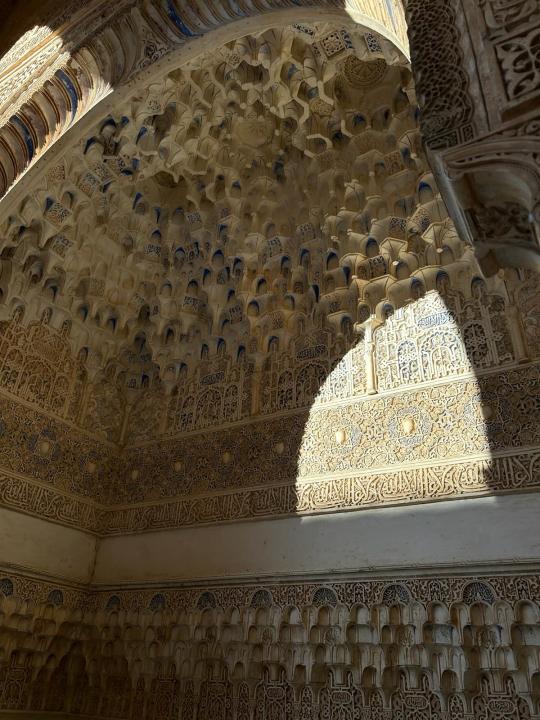
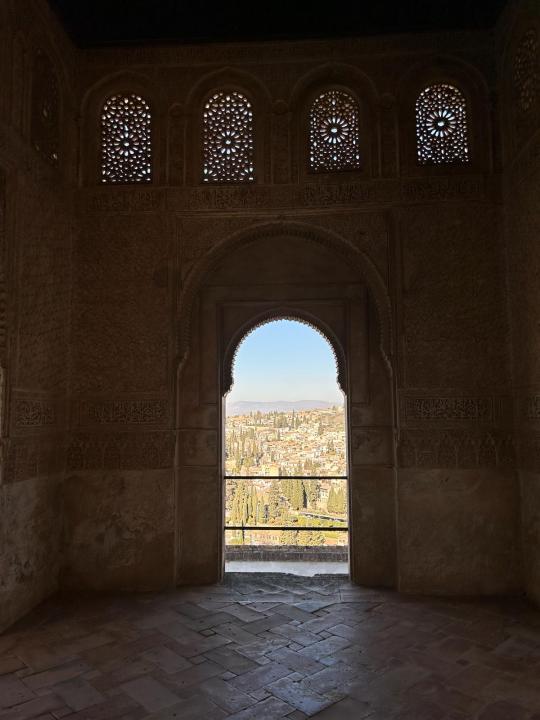
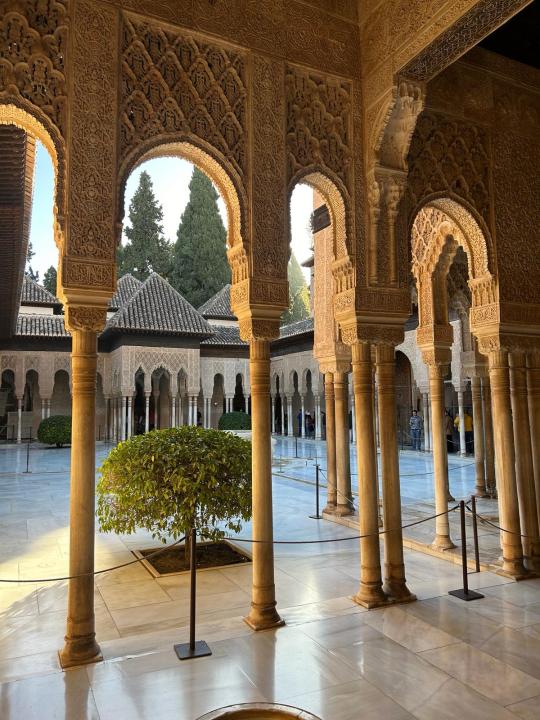
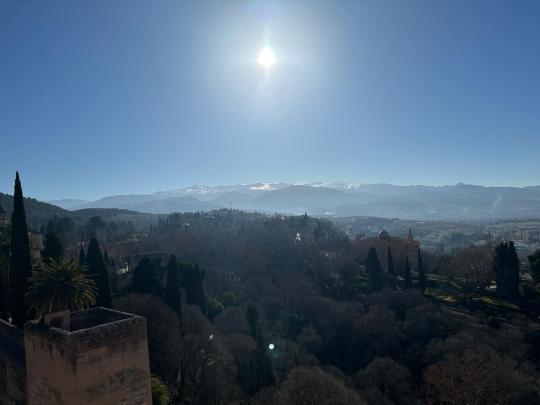
I think that during this trip, I really gained an appreciation — and curiosity — of solo travel. Although I was with my friend Emma much of the time, I felt a great deal of peace in exploring La Alhambra at my own pace. Without anyone else to turn to, I was forced to be present and attuned to my surroundings, and that enabled me to appreciate them that much more.
I think that part of that appreciation, however, was derived from the sense of independence and freedom I had existing alone in Granada. Going into college, being alone terrified me. I would step into the dining hall for lunch and wander through the common spaces, looking for a familiar face I could share a meal with. Now, I try my best to cherish the moments in which I can connect more to myself, whether that be during a meal, practicing a hobby, or exploring an ancient Moorish palace. That’s only something I've been able to move towards through consistent practice -- AKA, spending deliberate time alone. I hope to continue deepening that connection throughout this semester solo-exploring Spain and Europe, which I know is something I'll carry with me for the rest of my life.
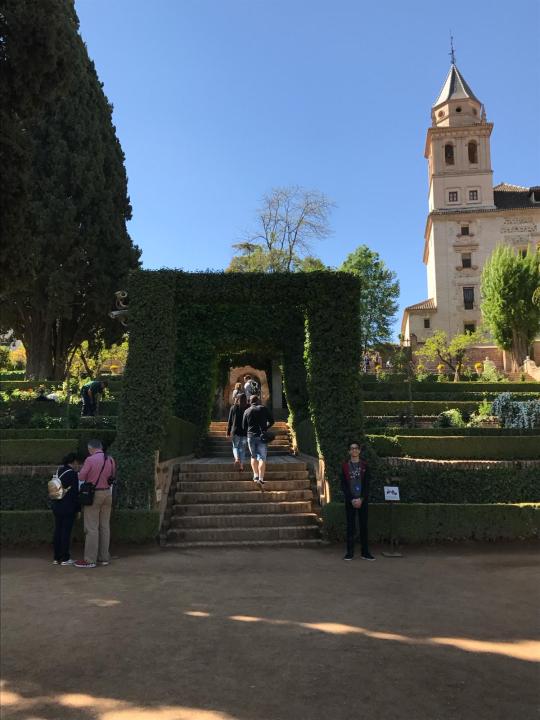
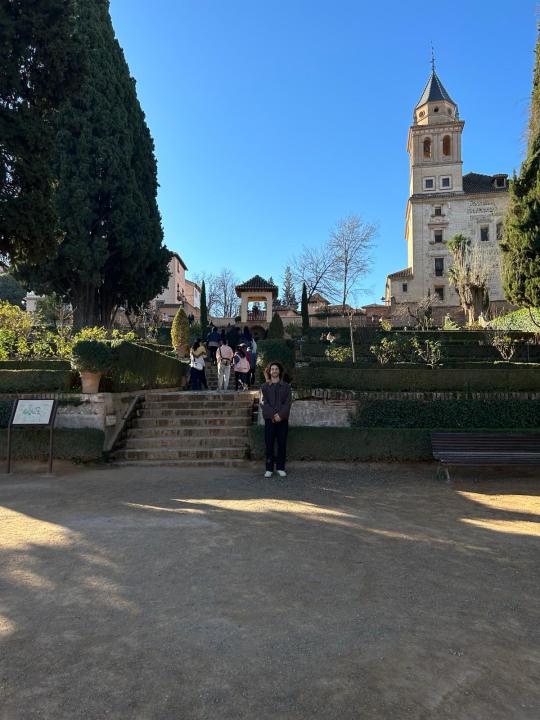
Aside from La Alhambra, Emma and I explored the city and its various landmarks (El Albaicin, a predominantly Muslim neighborhood, the Granada Cathedral, the Monastery of San Jeronimo, the Mirador de San Miguel Alto [and an epic sunset], and even a jazz-esque show with Spanish flair from a band at a local music club). More pictures below.

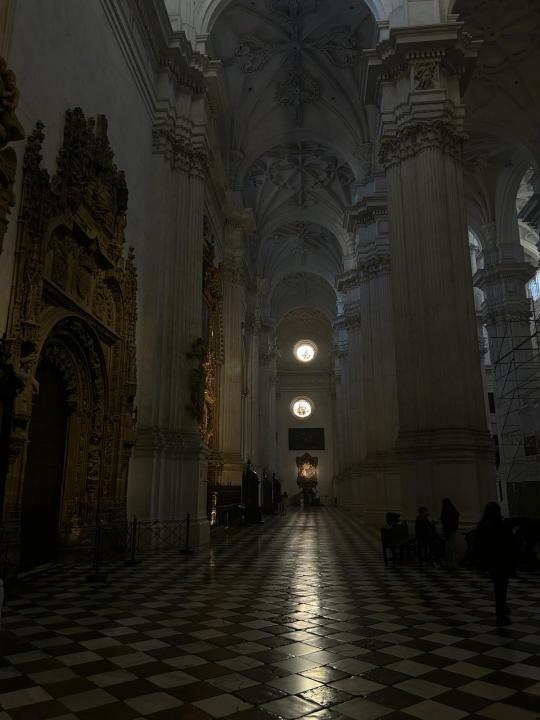


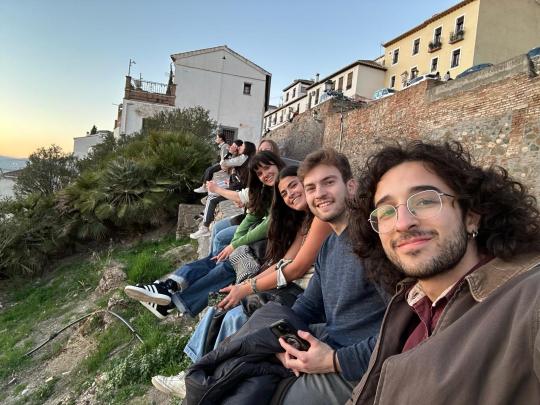
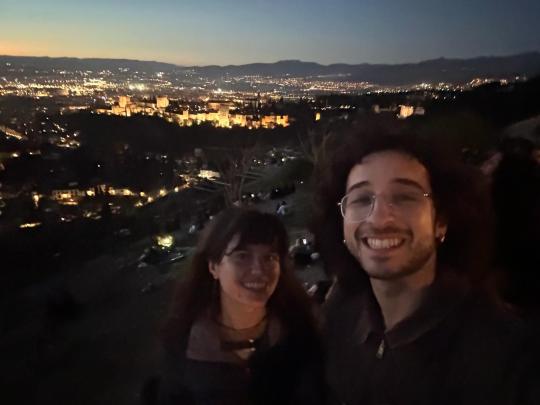

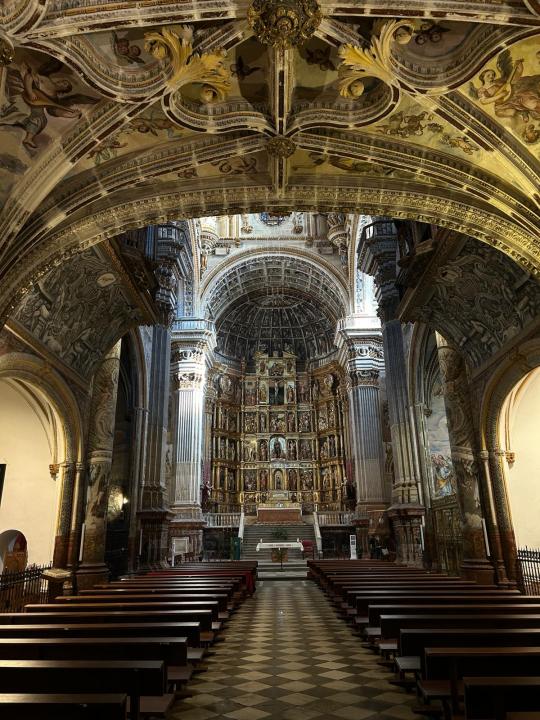
On the way back home, we stopped at a rest stop for the bus, and I couldn’t help but notice how familiar it seemed. It conjured up a nostalgic feeling that could have only come from my first trip in Spain — I realized we had stopped at the same station.
For old time’s sake, I bought a Kinder Egg Sorpresa. These things were a huge deal to me in 8th grade, as they are banned in the USA for being a ‘choking hazard’. Inside the chocolate exterior was a little plastic goat toy that will now serve as the centerpiece of our dining room table.
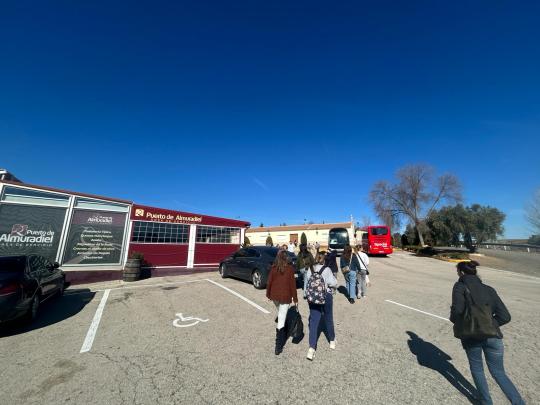
It’s funny to think how much of a different person I am from the 13 year old on vacation with his school friends and Spanish teachers. But it’s also comforting to know that all of these memories I carry with me explain the person I am today.
This week, I got a little more into school groove, took a rollerblading route, visited the Reina Sofia museum and went to see some amazing techno DJs over the weekend. Per usual, check out the photo captions for more info on the content this week :).
Hasta luego,
Niko Economos
Aerospace Engineering
Universidad Carlos III de Madrid
Madrid, Spain
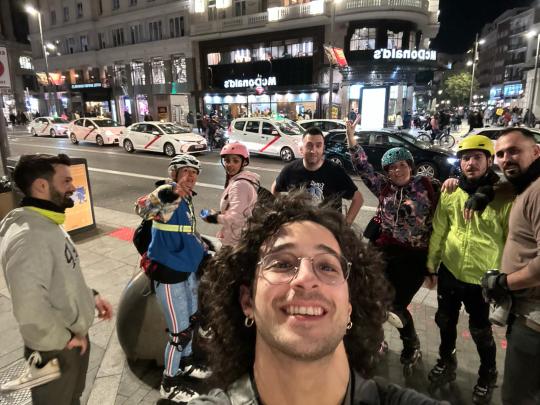
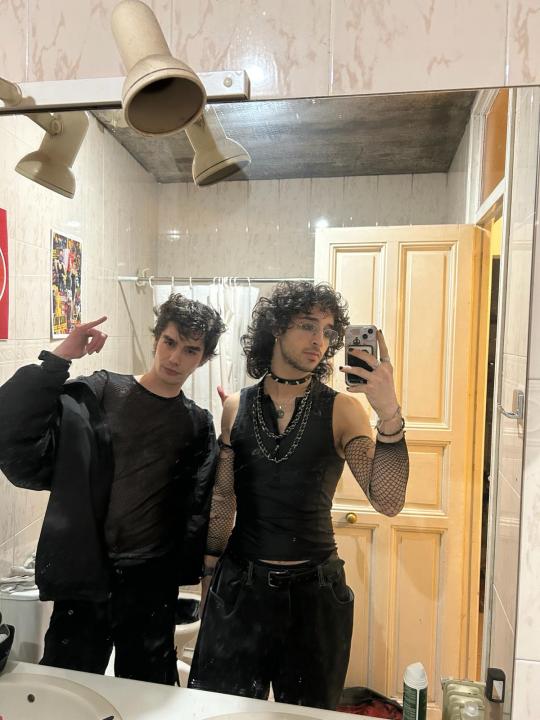

4 notes
·
View notes
Text
Madrid, Week 1: La Bicicriti
Hola a todxs, soy Niko otra vez!! I’ve been in Madrid now for a little longer than a week, but it has felt like I’ve been here for a month. I watched a VSauce video about this phenomenon a while ago; Basically, when your days are filled with many novel, interesting events, your brain remembers the time spent as feeling longer than reality because there are more memories filling the space. That’s definitely true. I’m writing this in a cute cafe in the neighborhood Lavapies, while some old guy named Jesus who speaks in an accent that I can barely understand starts conversation with me, just one example.
As I mentioned last week, one of my hobbies is rollerblading. I started doing it when I was around 12 years old. I loved doing aggressive/trick rollerblading in skate parks, and I even went to a sleepaway camp to skate one summer. It was super epic.
Then, highschool started, and I lost a whole lot of time; I stopped rollerblading — until I rediscovered it in college again. At Michigan, I found people that loved rollerblading as much if not more than me, and the activity turned from something nerdy that I used to do when I was little into something cool in which I could find a community at Michigan (shoutout skate club!).
So, when I was preparing to leave for Madrid, I struggled with the decision to bring my skates or not. They probably weigh 10 pounds or something absurd, not very conducive to luggage with weight limits. But a friend of mine who had studied in Europe in the past told me I’d be crazy not to bring them; they were right.
Fast forward a week after I arrive, and I’m rollerblading through the streets of Madrid, drum & bass music blasting from a massive speaker strapped to someone’s bike, a mob of bikers, longboarders, and rollerbladers alike engulfing me on all sides. No police, no group leader, no motors, just a critical mass of people partying and celebrating sustainable travel.
However, finding this “party on wheels” (as my new friend Jander described it) wouldn’t have been possible if not for a good amount of courage and trust. How did I find it? It was a multi step process:
Step 1: Look up on Google “rollerblading in madrid”. Find the instagram page “@madrid.fns”, or Friday night skate, which does a big skate through the city one Friday every month.
Step 2: Go to the first FNS event. It got rained out, so it was rescheduled to an indoor skate rink. I went there alone, feeling timid but determined to get involved in the community. When I arrived, I strapped on my skates and started going around the circle somewhat awkwardly practicing my footwork, wanting to start a conversation but not confident enough to interac with anyone.

Step 3: Have a nice middle aged rollerblading spanish guy approach you because you definitely looked super awkward. We started talking, my nerves imposing somewhat of a block on my spanish speaking abilities. However, we talked about how we started skating, about the event, and about the blading community in Madrid. He added me to a Telegram group chat that people use to organize rollerblading routes in the city throughout the week. After this, I loosened up a little and started meeting the other bladers there. Notably, I met helicopter pilot from germany named Zoe who taught me how to powerslide.
Step 4: Go to one of the skating events you saw in the telegram group. I hopped on the Subway, rollerblades in hand, prepared to do a route called “Héroes” run by a certain Jesus (not the old man). I managed to find the meeting spot, introduced myself to a few people, and then we were off. The route started off tame and ended up with some pretty insane hill bombs, skating on Gran Via (the Broadway street of Madrid), and weaving through pedestrians in the tiny walking streets in the city center. It was pretty epic.


Step 5: Meet three dudes: Jander, Dester, and Kevin, who are experienced rollerbladers. Talk with them, beatbox for Jander while he freestyles in spanish, skate a bit more through the streets while trying to keep up (their skates are way better than mine for speed, I was SWEATING trying to keep their pace). Before we parted ways, Jander told me about the Bicicritica (spanish version of Critical Mass) — the aforementioned “party on wheels” that happens once on the last Thursday of every month.
Step 6: Meet up with Jander, Dester, Kevin, and some of their other friends for the Bicicritica and have a blast, meeting tons of other spanish bladers (and a British biker) in the process. The Bicicriti is kind of anti-establishment/communist in nature. There are no group leaders, and there's not a police escort or anything. It's kind of just a big mass of bikers and rollerbladers that take the streets and have a good time, all while promoting sustainable travel. Rollerblading in a huge group, listening to electronic music, seeing the city of Madrid, all while drinking a beer — what more could I ask for?


To be honest, I’m pretty proud of myself for how much I’ve gotten integrated into the community so quickly into my trip. Thinking back, this whole week patinando (skating) offered a huge opportunity to overcome that little voice in my head that says I shouldn’t. At multiple points throughout the multi-step process above, I felt quite uncomfortable. Whether that be due to social anxiety or insecurity (in my spanish language or rollerblading skills), I had to continually convince myself that these feelings were okay, and that if only I endured them a little bit longer, things would get better. And they did, and what was on the other side was 100x worth the discomfort I felt getting there.
Also, people are nice. It’s easy to forget that other people have as much empathy as I do, if not more. When given the chance, everyone I met was warm, and I felt very welcome in the community even as an outsider (and an American, which comes with its own stereotypes. I think I dodged these stereotypes by entering interactions with a large dose of cultural humility). The guys that I befriended welcomed me with open arms, and I’m excited to continue to get to know them. One remaining point of contention: It’s easy to make friends with people when the time spent with them surrounds a common activity. But I’m craving deeper relationships, which may not be as easy to form in this context. We’ll see where we go with that.
I’m very excited to keep blading in Madrid throughout the semester. Urban skating in a truly urban environment is an absolute blast. I’m gonna continue pushing through that discomfort throughout the rest of the semester in everything I do, hopefully bringing about new people and opportunities to experience.

This week, I also registered for classes, got tapas with new American friends, walked around Madrid a TON, went to the Prado museum, got famous churros from la Chocolatería de San Ginés, and partied a bit. Check out the photos and descriptions below for a little bit more on those.
Hasta la próxima semana.
Niko Economos
Aerospace Engineering
Universidad Carlos III de Madrid
Madrid, Spain
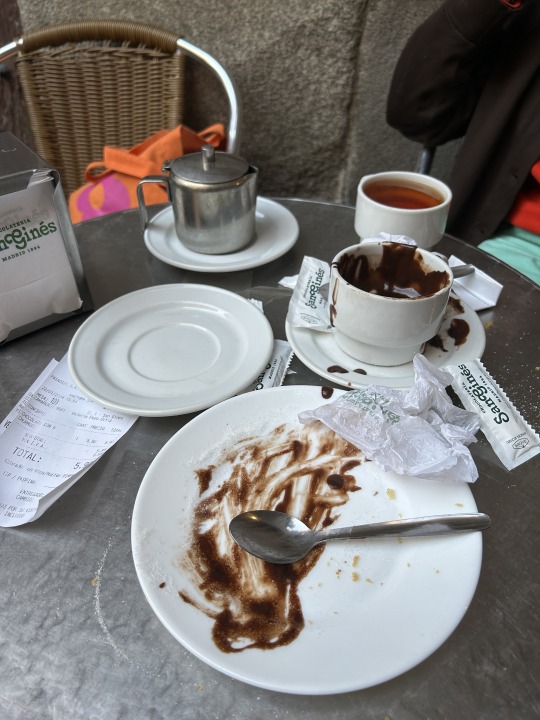

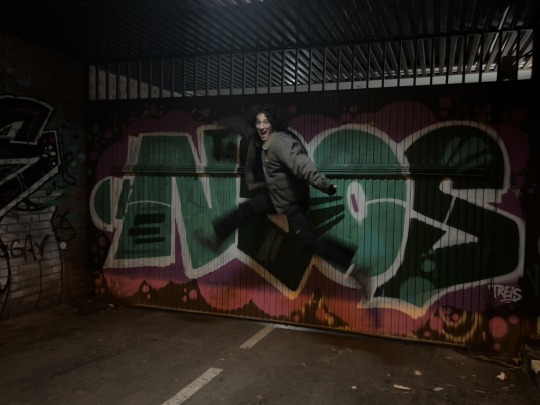
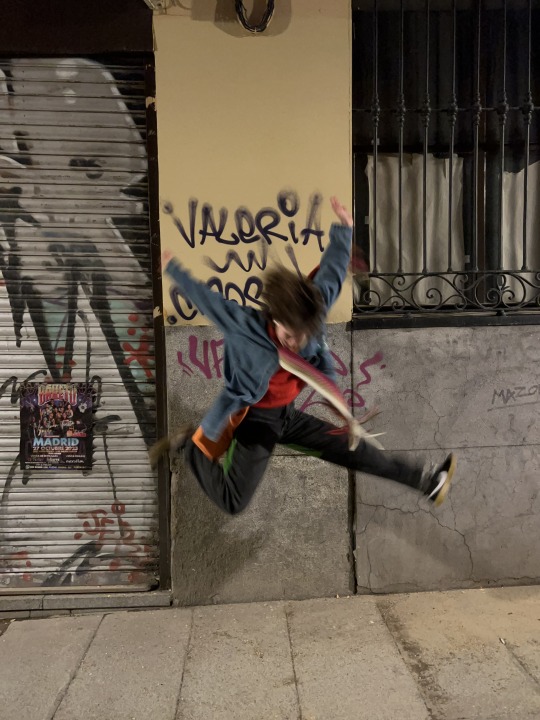





4 notes
·
View notes
Text
Madrid Week 7: Viva Italia (not america..?)
Hola a todxs :). Niko back here again with week 7’s blog of my study abroad experience in Madrid! Like I mentioned in last week’s blog, this last weekend I traveled to Italy, and this past weekend I was in Sevilla, Spain. My trip to Italy was particularly transformative and jam packed with personal reflection. Read on for the reflection, stay for the photos (and Italian food p*rn). This blogpost probably took the longest for me to write, and was honestly pretty difficult for me to put in words. I hope I captured my thoughts well, and I always welcome feedback and discussion to any and all readers (at any point in time!).
Argentina (but aren’t we talking about Italy?)
As I’ve mentioned before, the summer after freshman year, I studied for 6 weeks in Buenos Aires, Argentina. One particular weekend, I took a trip to Iguazu Falls — the largest waterfall in the Americas by volume, and one of the 7 natural wonders of the world.

Long story short, I got onto a tour bus with a bunch of strangers from around the world, drove 15 hours across Argentina to get to the falls, randomly selected hostel room groups based on who was sitting nearby on the bus, and ended up in a group with 4 girls from Mexico, my travel buddy from the USA, and 1 girl from Italy.
We spent a wonderful weekend together seeing the waterfalls (barring a short-lived but intense spout of food poisoning after eating something funky at a Brazilian buffet), and formed the foundation of what could turn into lasting friendships. But, come Monday, we parted ways, not sure whether we would ever see each other again.
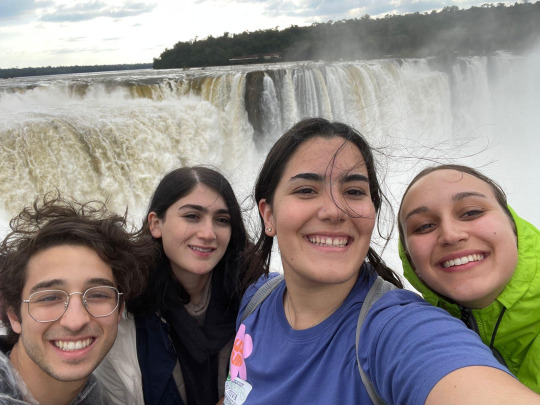

This trip was the first time I went into a travel situation without a true support system, and an important exercise in “trusting in the process” — and It helped me realize that I was capable of forming meaningful connections across language barriers, cultures, and in un-traditional social situations.
If it wasn’t obvious already, you might be able to see where this little backstory fits into my recent trip to Northern Italy. Before I departed for Spain in January, I sent a text to Gaia — the Italian friend I met in Iguazu — that I would be in Europe for the semester, and would love to see her at some point if the logistics work out.
Now we actually talk about Italy
Flash forward a few months, and well, the logistics worked out. Although our original plan was to go skiing in a small village in the Alps, we ended up being unable to due to weather issues. Instead, Gaia, her friend Camilla, and I took a tour of Northern Italy, visiting Turine, Asti, Moncalvo, and Milan.
In a way, this trip was an even bigger exercise in trust — although this time, it was my gut I was trusting, not the process. I hadn’t seen Gaia in nearly 2 years, and the only other time we had met lasted just 3 short days. I was about to spend another 3 days with her — but this time, nearly every waking moment would be spent together.
For some reason, the thoughts of “what if we didn’t get along?”, “what if it was awkward?”, “what if we got on each other’s nerves?” — normal things to think in this situation — never crossed my mind. I trusted my gut: that Gaia was someone that I got on with in the past, and I had a feeling that the people we grew into over the past two years would mesh just as well.
So, I didn’t worry. And I was right not to. After a short period of hesitancy, we clicked. We spent the weekend learning about each other — both from a personal and cultural point of view.
And by the end of this trip, I felt culturally enriched. There’s a level of cultural intimacy (is that a term? Well now it is, I just coined it) that can only be experienced by being someone who has lived and breathed that culture for their whole life — something that I feel like I’ve never had the pleasure of experiencing in my own heritage, first or second-hand.


A short aside on heritage in the USA
Ethnically, I am half Italian, half Greek. My great grandparents immigrated to the USA from the south of Italy through Ellis island, raising my grandmother, who gave birth to my mom. 4 generations later, I feel more comfortable calling myself Italian-American than Italian.
My mom’s side of the family was raised in northern New Jersey. I was raised Roman catholic, and I have 11 first cousins. Family gatherings are loud and boisterous, and people talk with their hands. My grandmother makes delicious Italian cookies called Pizzelles, and we call dish towels Mopinas (which isn’t even in the italian dictionary — it must have evolved on its own. Call it Englitalian [Italinglish? Coined.] ).

And that’s about all I’ve got to hold onto of Italian culture. Although I have more contact with Greece through the Orthodox Christian community and my direct-immigrant grandparents, I’ve never felt particularly connected to either culture. I don’t speak either language, and up until this past summer (when I visited Greece), I’d never been to either country.
People from the United States of America — especially, I think, those in the Northeast — place emphasis on their ethnic heritage that those from other countries around the world do not. Ask an American, and they’ll probably know where their blood comes from — if the records of their ancestor’s immigration do exist. Ask an Italian, or a Spaniard, and they probably will not. Odds are, in fact, that their blood will be just that: Italian, or Spanish.
The USA is a country built on immigrants, and it continues to be so to this day — and to me, it somehow feels wrong to not know anything about your cultural background.
This is a weirdly complex topic — one that I’ve thought about a lot —but bear with me here (and keep in mind, this is all from my personal point of view, and I welcome all new perspectives! Feel free to send me a message to discuss🙂). I think that, in the more liberal sphere of American adolescents, it’s almost “bad” to not know anything about your heritage — especially among white people, which is a label that I identify with. The USA has done a lot of messed up stuff in the world, and I think this is true to an extent that young Americans feel a desire to distance themselves from their nationality.
Instead, we grasp on to what we have that sets us apart from it — where our parents, grandparents, or great-grandparents come from. It gives us something to point to in conversations, something that lets us say “see, look, I’m not just a white-washed American, I’m cultured”, something to help us feel like we have more depth — especially in a country where everything feels like it comes from something else.
This is why I mentioned above that this is more common in the Northeast — although I can only truly speak on what I’ve experienced in Northern Virginia and in the University of Michigan. When I think of the term “melting pot”, I think of places like New York City. Southern states, and perhaps those in the West, have developed a culture that feels more unique, more distinctly American, and this is why (from my outside perspective) it seems like something more people feel proud of and claim as their own.
As I mentioned, this perspective comes from personal experience. And this is all something I’ve felt as a white American, at least 2 generations removed from my “mother countries”. After spending a weekend in Italy, I finally got a piece of that contact that I had always craved.
Italo-
Italian culture is just that — uniquely italian. Food, history, architecture, art — not only is it unique, but it is rich. From the first day that I spent with Gaia and Camilla, it was apparent that they felt a deep connection, pride, and understanding of their culture — and this is something that they graciously and enthusiastically shared with me.
I now have a greater — albeit limited — understanding of what it means to be Italian, in Italy. I learned about Italian espresso, when to have it (spoiler alert — any time of day is game), how to prepare it, and how it tastes. Some of my favorite moments of the trip were peacefully spent over the breakfast table in Gaia’s home, enjoying a light carb heavy breakfast and freshly brewed coffee.
We ate simple, delicious food at every restaurant we went to. The food was less extravagant than I expected it to be. Most of the meals were simple, with a focus on the ingredients and their preparation. Pastas, pizza, Milanese, Ragu, more pasta. Tiramisu, and gelato, too.
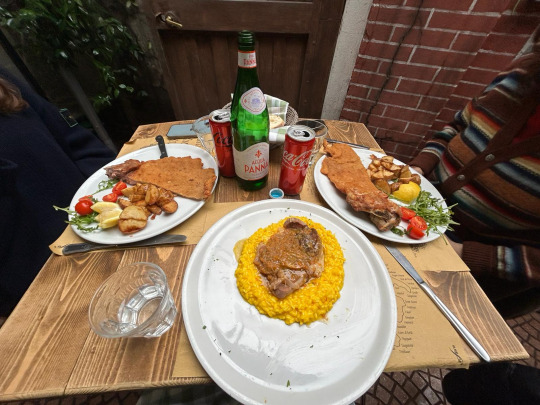


We had a night out — first to aperitivo, then to dinner, then to a bar that was built in an old desecrated church, then to a cheesy karaoke bar where the whole place was singing old Italian songs at the top of their lungs — with a group of 12 in Gaia’s hometown, which was made up of friends stemming from her high school days. The biggest difference between the Italian dinner party and an American one — we took our time. There was a feeling of ease at the table. Nothing was rushed. We enjoyed each dish, each glass of wine, and over everything, enjoyed each other’s company. The focus was on the people and the conversation, not on what was to be ordered and how fast it came out. I hope to bring this rhythm back to Ann Arbor with me (but that may be more difficult than I think. See footnote 1 below*).
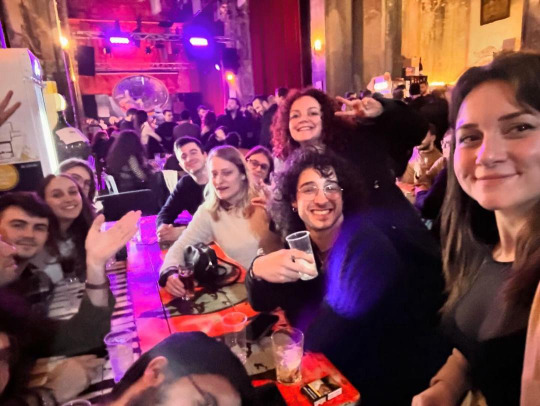
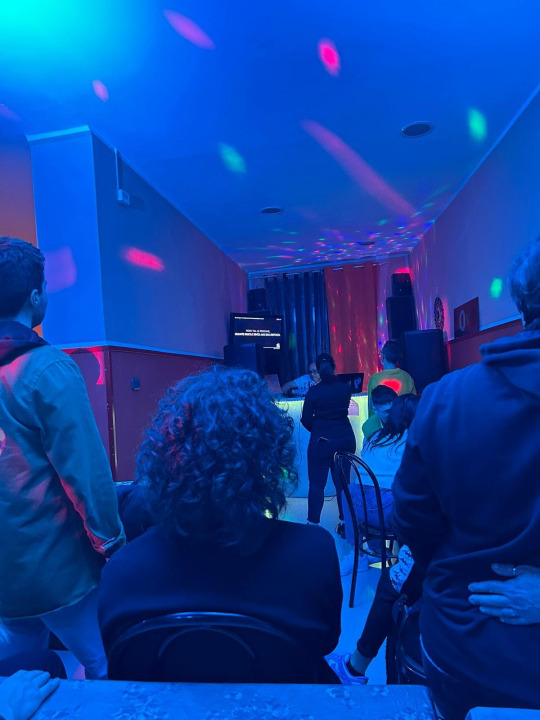
We explored multiple Italian cities, and walked a TON. I learned an interesting perspective of Milan (which was a beautiful city) from Camilla’s boyfriend — Milan is Italy to Europe, and Milan is Europe to Italy. (See footnote 2**). The architecture was beautiful, and after a rainstorm, Milan looked magical. The ground was sparkling, reflecting the dramatically lit buildings of the city center in the puddles that gathered on the ground. I saw the Italian countryside, picturesque rolling hills backdropped by an epic sunlit cumulo-nimbus cloud.
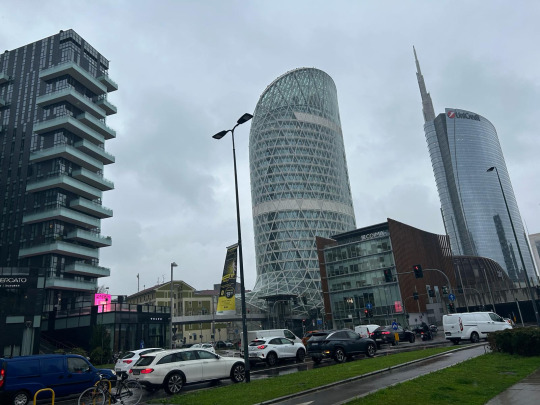
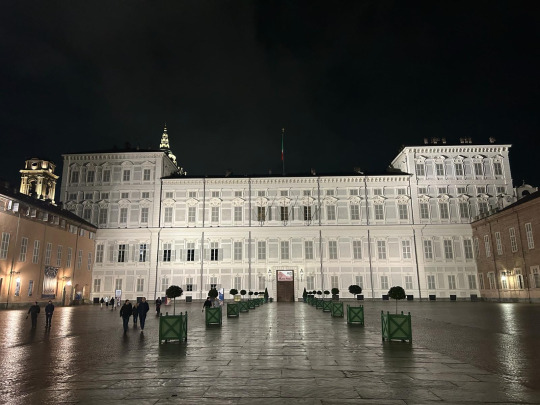
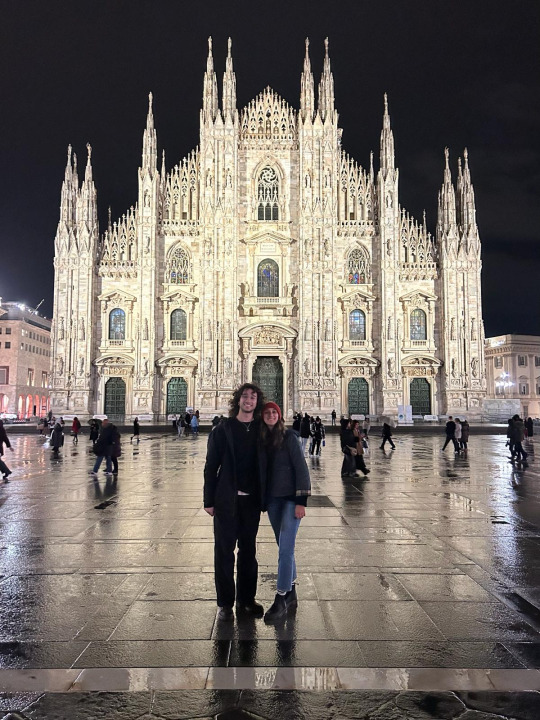

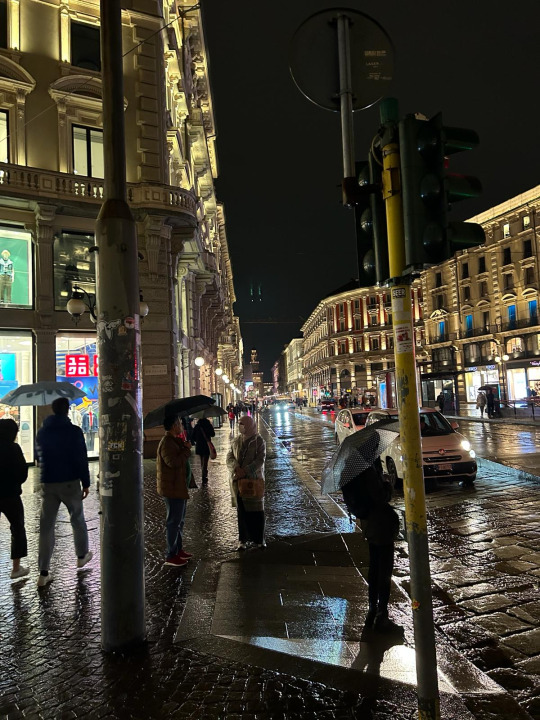
I even learned a base of the Italian language (I probably said “Come si dice” 100 times) that will serve me well if and when I want to learn it in the future — or if I ever get my Italian citizenship and decide to move there. Guess only time will tell.
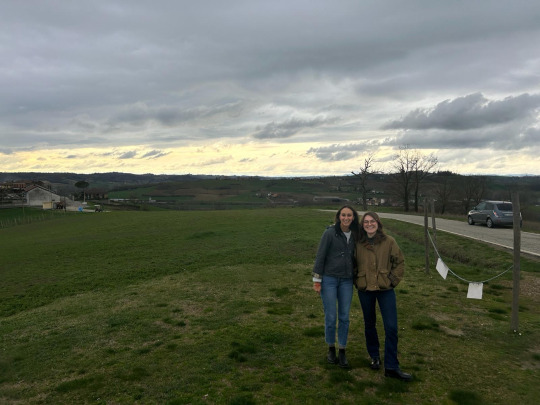
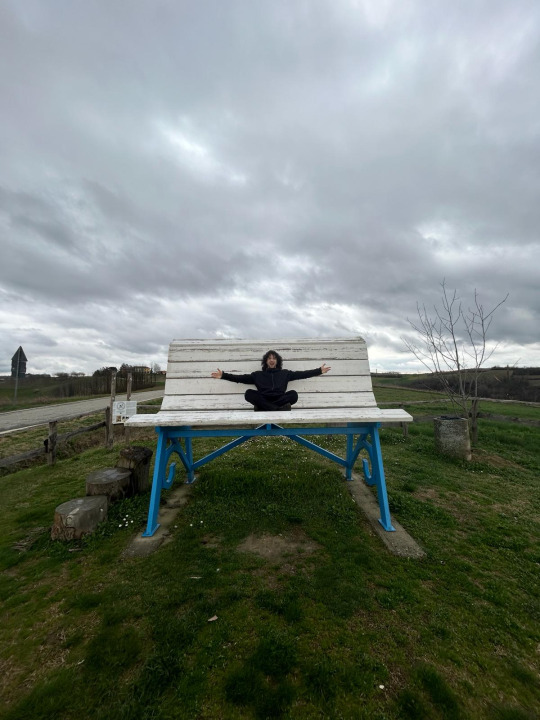
-americano
3 days is not a long period of time, but I can confidently say now that I understand a little better what it means to be Italian. I feel more connected to my cultural heritage — and in turn, I feel more connected than ever to my native culture in the USA.
It’s true that the USA has done a bunch of messed up stuff in the world. Imperialism, war crimes, political and economical extortion — the list goes on. But the longer I spend in Europe — the more I come into contact with different cultures, and understand foreign perspectives on the USA — the less these things feel like they’re inside a black box. Instead of avoiding these hard truths, I can face them head on — allowing me to acknowledge the bad and the good that comes with US culture.
A big critique I’ve heard abroad is that the United States has no culture of its own — but I don’t think that’s true. The USA is a place where global cultures collide, providing its citizens the opportunity to experience bits and pieces of the world and giving rise to unique elements born from this fusion.
Over the past 2 months, I’ve slowly shifted away from the feeling of shame that comes with being an American in Europe — and that’s thanks to a willingness to learn, adapt to, and accept cultures that I experience while I’m abroad (re: cultural humility, blogpost coming soon). Now, I’ll proudly say that I’m 50% Greek, 50% Italian, and 100% American. With my continuously evolving understanding of my individual parts (and all of the other cultures I come into contact with, especially Spain), I feel like I can better understand and contribute to that fusion, both in the melting pot of the United States, and as an international citizen in Europe — enriching the lives of myself and those I come into contact with.
Such is becoming “cultured” — a concept that has a bit of a pretentious connotation (IMO), but is worth striving for. I’ll be returning to Italy for spring break (Rome, Florence), so hopefully I’ll continue to develop this connection then. I also bookmarked in Google maps here all the places I visited in Italy this trip (and will do so in the next one) if you're considering taking a trip and want recommendations!
I planned on writing about Sevilla this week too, but I think this post has gone on long enough. I thoroughly enjoyed the different vibe it has from Spain, even through the rainy weather we experienced.
As always, check out the image descriptions for more details on each one. I hope everyone has a great rest of their week, and see you back here next soon!
Hasta luego,
Niko Economos
Aerospace Engineering
Universidad Carlos III de Madrid
Madrid, Spain
* In Italy, and the rest of Europe, servers get paid fair wages. In the USA, it’s not required, because it’s expected that servers will make up the difference in tips. I worked as a server for 2 summers, and made $3.50 an hour. The amount of money I made in a night was directly correlated to the number of tables I turned over. As a result, I did my best to get orders in fast, food out faster, and clear the table as quickly as I could so that I could make more money. Until this fact changes, I think it’s hard to have the same no-rush Italian experience over dinner unless you’re really conscious of it. Personally, if I’m not feeling pressure from a server to leave quickly, I’m likely feeling a sense of guilt for staying too long and reducing their nightly wage, no matter how well I tip. Maybe home cooked meals are the answer, which I’ll hopefully be well practiced with next semester :)
**To Europeans, they look at Milan and see what they think of Italy. The world capital of fashion, beautiful architecture, prosperous and well known city. Italians look at Milan and see what they think of as Europe —highly international, intercultural, and as a result more gentrified and expensive. I found this to be really interesting. Is there a US city that fits this bill?
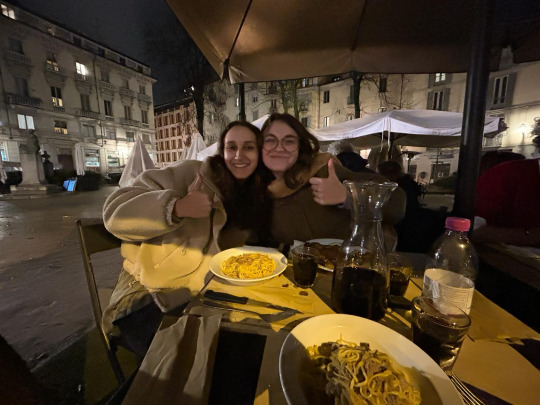
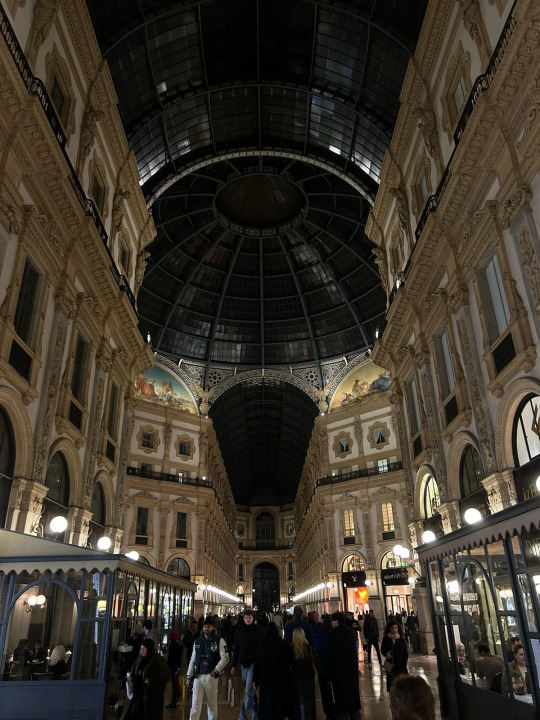
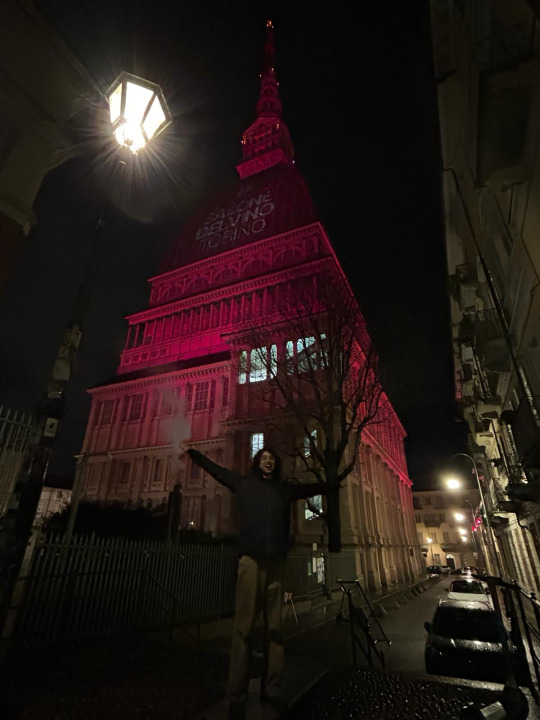
3 notes
·
View notes
Text
Madrid Week 12/13: I got got (Morocco, part 1)
Hola a todxs! Niko back here with week 12/13 of studying abroad in Madrid! Don’t fear, I will not be going on any esoteric rants about time or something this time (except for the fact that I have 45 days left in Madrid, damn). Instead, I wanted to take this blog to write about the experience I had visiting northern Morocco this weekend with a tour group. Spoiler alert, it was awesome, and I’ve had a ton to reflect on. Moroccan culture is unlike any that I’ve experienced in my life (which makes sense, as I’ve only ever traveled in Europe, the Caribbean, and the Americas), and I had the pleasure of being immersed in it while simultaneously meeting new people. Since there’s so much to unpack, I decided to split this blog up into two parts, for the two legs of this trip. Let’s dive in!
Smart on the inside
This trip has definitely been a highlight of my travels thus far, and looking back, I really got the best of both worlds. I went on this trip with a tour group from a company called Smart Insiders, which helps young people in Madrid (especially those coming from abroad) find housing, get involved in community activities, and most importantly, travel. I would not recommend Smart Insiders, or any tour group for that matter, if you’re a serial planner when it comes to travel and need to fit in every item on your bucket list — or someone who prefers to wander a city, choosing what to explore based on vibes alone.
With that being said, I would highly recommend Smart Insiders — or tour group experiences in general — if you fall somewhere in between those two extremes. Traveling with a tour group means that there’s a pretty rigid schedule to every day, but if you don’t mind letting go of the reins and can just ride the flow set by the tour guides, you can have as amazing of an experience as I did (given that the tour company is good. Smart Insiders was).
A month or two back, I signed up for the trip alone. A friend had recommended it based on a trip he took to Spain’s Basque country. When I saw that they had a trip to Morocco, I immediately resolved to sign up. I had wanted to experience traveling in a tour group again after my first time in Buenos Aires (where I met Gaia, my italian friend I visited and wrote about many weeks back!), and Morocco was a bucket list travel destination for me. Given that the culture was so distinct from what I was used to, I figured that it might be nice to have the whole trip planned out for me ahead of time.
So, I paid a reasonably low price for the group (~200 euros for 3 days of travel, tours, housing, etc), bought the plane tickets fro Air Arabia, and forgot about it until last weekend. Flash forward a month or two, and I was immediately buffeted by an arid wind as I stepped off Plane that had just landed in Tangier. Once we were through customs, I was greeted by a Moroccan man named Saied and a large congregation of around twenty familiar faces from the flight over, mostly 20-something year-old Americans with some Canadians, French, and a Belgian sprinkled into the mix (majority of which were English teachers). Smart Insiders collaborated with a Moroccan tour company to put together this trip, for which the entire itinerary had already been laid out.
We piled onto our little tour bus and started getting to know each other. As we departed towards our first destination, Asilah, I was flashed with deja vu from the bus scene on the way to Iguazu Falls, Argentina. A highlight of that trip was the people I met, and I stepped away from it with one key takeaway: people who like to travel are, almost by definition, open to new experiences. That attitude extends towards their interactions with others. Consequently, I knew that I would meet interesting people this weekend, and if not, I was assured that I could always keep myself company — especially with an entirely new landscape and culture to explore.


Both Worlds
Which two worlds was I referring to in the section above, you may ask? Solo and group traveling.
I came alone on this trip, which meant that I had no allegiances or obligations to anyone but myself and the schedule set by the tour leader. During our blocks of free time on the trip, I could choose where to go, what to do, and who to do it with — and to be honest, I spent most of my free time in Morocco wandering around by myself. Call me fascist or impatient, but I don’t really like the democracy (and associated waiting) that comes along with traveling in a large group of people — especially if they don’t know each other well.
When I travel alone, I can do whatever I feel like, at my own pace, which was a luxury in the ultra-dense Souks in Morocco. I’ve found that my self confidence in new environments has really blossomed this semester simply because of the amount of weird cultural situations I’ve had to navigate by myself. Without this, I would have never had the confidence to break away from the group, and I’m proud of myself for getting to the point that I could do so comfortably.
“But wait Niko,” you may ask, “Didn’t you just say last week that traveling with close friends is always better”. Why yes, my friend, I did (might I add, very conveniently, and actually not on purpose). Seeing the world with close friends gives new depth and meaning to the things we experience while traveling.
I chose to be alone a fair amount on this trip, true. However, the majority of my time spent was with the group. Together, we went on guided tours, shared meals, spent many hours on the bus chatting (and sleeping), rode camels, and more. I can’t say for certain if I’ll meet up with anyone on this trip again in the future (shoutout Gaia again :) ), but I learned something from everyone I met (especially the two french girls on the trip! merci!) that I’ll take with me now for the rest of my life. By the time we rolled up to the airport together on Sunday, I felt that we had all really bonded. I knew almost everyone’s names, and relished in the feeling of being part of the tiny temporal community we had formed — a community which would never exist again, which made it all the more special. If you have the opportunity sometime, join a tour group and go somewhere cool for the weekend! It’s a unique adventure that I think everyone should experience at least once (and it’s soft on the bank account, too ;) ).
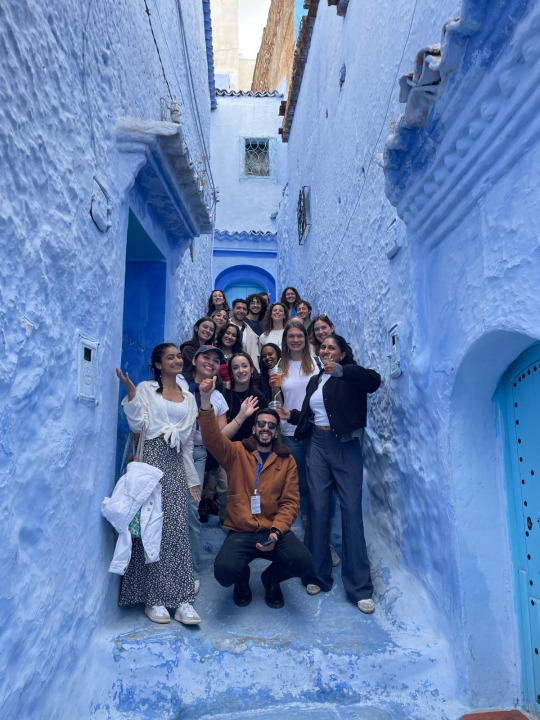
Hell-o Morocc-o!
So, now about Morocco itself, the focal point of the trip, which was one I’ve been looking forward to for the entire semester. As I mentioned, this trip would be my first time in Africa, and my first time experiencing a non-western culture. I certainly was not disappointed (sorry about the lame title of this section. I’m embarrassed).
Moroccan culture is a mix of Arab, Berber, African, and European cultures, but to an outsider like myself, the Islamic/Arabic influence came across most strongly. We visited Asilah, Tangier, and Chefchaouen, all of which are located in the northernmost tip of Morocco, bordering the strait of Gibraltar. Consequently, Spanish is a very common second language to Moroccans, after their native dialect of Arabic. More often than not, Moroccans would start interactions with our tour group in Spanish (and oftentimes, we would respond back to them in Spanish, too B) ). French and English are also very commonly spoken, and an impressive number of people I interacted with were fluent in all three.
We started the trip in Asilah, a small town on the west coast of Morocco’s northern tip, known for its quiet beauty and art scene. It was very calm and incredibly peaceful. One of our local tour guides, Hasan, led us on a short route through the city where we took our first look at a Moroccan city. We had lunch (freshly caught swordfish) and departed, spending the rest of the day hopping around different sites in the region: the caves of Hercules, the Cap Spartel lighthouse, and a beach on the side of the highway where we all took our turn to ride on a camel (which I wasn’t a big fan of — more info in the picture description).

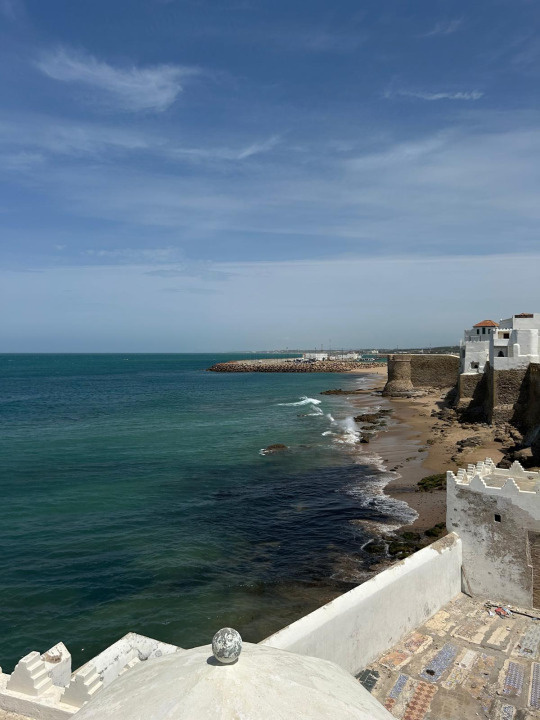



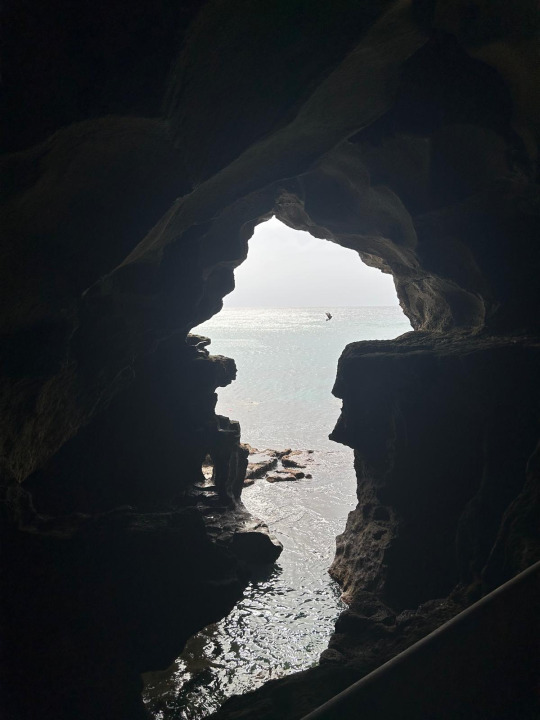

We finished at Tangier, where we checked into our hotel and departed for a group dinner at a traditional restaurant. The food was delicious, and we got a little surprise too. I finished the night drinking some mint tea and eating some flatbread at a little bar in a square. Yum.

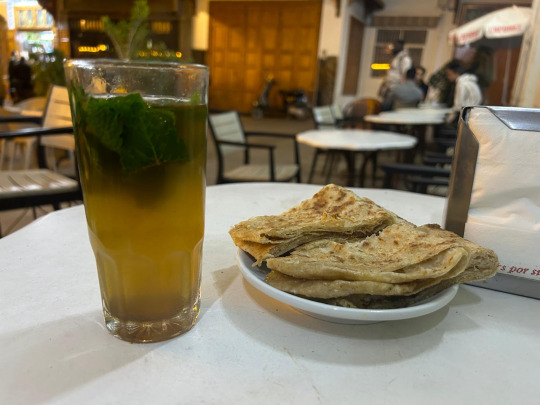
In general, the food in Morocco was amazing. I’m a big fan of the Mediterranean/Arabic spice palate (and mint tea, although it was a little sweet to my liking), and that’s all we ate the whole weekend. One mini takeaway that I realized: I think food in America has trained my palate to desire more salt than is used in other countries. In Morocco (and Spain, Italy, at times) I often found the a bit undersalted. There’s nothing inherently wrong with this (or maybe not… nearly 90% of Americans consume sodium at levels which exceed amounts recommended by the 2015–2020 Dietary Guidelines for Americans), but it’s interesting to be aware of.
We spent the next day exploring Tangier’s Medina (historic city center). The streets were narrow, the architecture was beautiful, and the shopping was plentiful and diverse. The shopping district had a vibe that was completely distinct to any I’ve visited before, people were bustling, things were colorful, and every few steps we’d get a whiff of some heavenly spicy soapy or incense-y smell.






We visited a pharmacy (where I picked up authentic Moroccan Argan oil), a textile shop (I got an epic cotton-cashmere scarf), and various shops selling artisan goods and souvenirs (a sick black woven belt, some postcards). Shopping in Morocco has a distinct vibe for one very special reason: none of the items have set prices.
Dance battle in the souk
If you weren’t aware, if an item has no price tag in a Moroccan shop in the Souk (market area), you have to bargain/haggle to get a good price. Crudely and metaphorically, haggling is somewhat like a dance battle, with each dancer attempting to gracefully undercut the other’s bluff with their words, body language, and actions. You can’t make a starting offer that’s too low, because then you’ll risk the vendor laughing in your face (consequently relinquishing all your power). You can’t show too much interest in the product because then the vendor knows that you would be willing to pay a higher price. But you can’t show too little, or you’ll hit a stalemate and they won’t be willing to negotiate further. Maybe it’s like judo or something, using the opponent’s body weight against them, something like that.

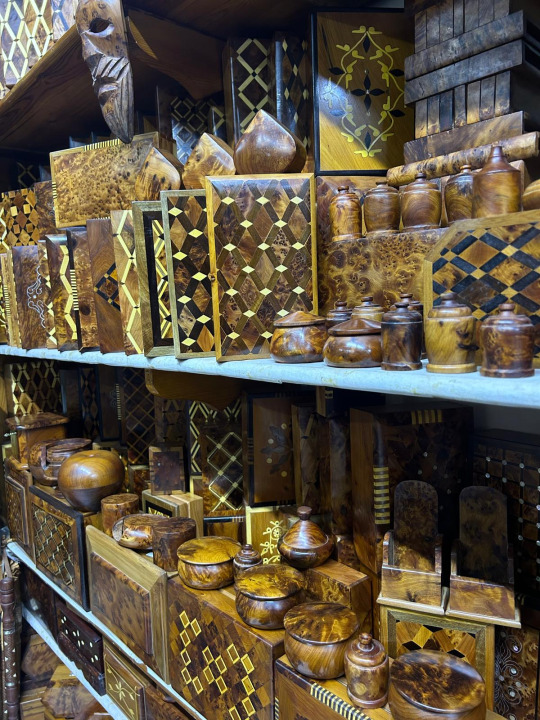
Having watched a few youtube videos about haggling strategy on the plane ride over, I was ready to roll when I stepped into a huge artisan shop. Every action was intentional. I found a woven leather belt that I really fancied — but focused my attention towards other items until I was ready to make an offer. The vendor gave me a starting offer of 350 Dirham (Moroccan currency, ~35 euros). I countered with 100 (seems low, I know. you’re supposed to counter with ⅓ of the original price and go from there). After a good amount of back and forth (trying desperately to hide my steadily rising heartbeat and sweaty palms from showing on my face or in my voice while a few other shopkeepers and another member of the tour group watched the battle ensue), we reached a stalemate. I pulled out my ultimate trump card: I started to leave, to show that I I didn’t care that much (I totally did, this belt was sick). He called me back to make me a cheaper offer to keep me around, around 200 Dirham. I said 150, take it or leave it. Deal made. Boom. Great success, and now that belt holds a little more meaning that it would have if I had just picked it off a shelf.
My biggest fail? In a shop shelling scarves. The vendor was hyping me up, saying I must be so smart if I speak so much Arabic (I knew like 4 phrases), where am I from, what languages do you speak, etc. etc. Then I found a scarf. He offered me 100 dirham for a Pashmina scarf (which was not handmade, but beautiful nonetheless), I countered with 30. The vendor pulled out the “he’s not like other vendors” tactic, said that he prefers not to start with a crazy high price, and thus doesn’t have much room to go down. He was a really nice guy, I believed him. We settled on two scarves for 170 Dirham, and I left happy. I proceeded to walk through the Souk, seeing scarves of the same maker hanging up at a nearby shop. I asked how much for one, he told me 80 dirham. Damn, I got got. The other guy was intentional with every action, he knew what he was doing. Well played bro.


Haggling like this was exciting, it let me practice a skill I didn’t have, it was totally new. I felt culturally immersed, and got some cool things out of it that I’ll have as a memory. Although at times it was stressful, I kind of wish more people did business like this in the USA. It would be fun.
But simultaneously, I felt a good amount of resistance when I first started practicing the skill. I couldn’t shake the feeling that I was being incredibly cheap offering a third of their asking price, especially when in theory, I could have afforded it. There’s a lot of nuance with this surrounding the privilege I carry with me when I travel — more on that in the next blog.
Overall, Tangier has a good vibe. Downtown is very modern, which is in stark contrast to the old-town artsy vibe of the Medina. We left in the late afternoon to Chefchaouen, the “Blue Pearl”, which was my favorite leg of the trip… more on that in the next blog, along with some important commentary/reflection…. Stay tuned!
As always, thanks so much for reading :). Check out the image descriptions for more details, and I’ll see y’all in the next post!!
Salam,
Niko Economos
Aerospace Engineering
Universidad Carlos III de Madrid
Madrid, Spain
2 notes
·
View notes
Text
Madrid Week 11: Basque-ing in Nature
Hola a todxs! Niko here, back again with week 11 (writing this during week 12 oops [I had a huge databases project that I grinded on all of last week, expect a double blog week soon]) of studying abroad in Madrid!! I’ve got a little over a month and a half left in Madrid. Near the beginning of the semester, I mentioned a VSauce video about time that I enjoyed a lot. Recently in my culture class, we discussed the same concepts. Upon reflection, I think that I’m experiencing time in an incredibly ideal way.
What do I mean? Time flies by fast. It feels like weeks go by in the blink of an eye. Last week, what seems like yesterday, it was March, and now we’re already halfway through April. Time flies when you’re having fun, and I think that much is true. I’m having a blast, experiencing a new world every week, and as a consequence, I’m not thinking about time as it passes. It doesn’t drag; It goes by quickly.
But I’m still in lecture every week. And two of my classes (the engineering ones) are oftentimes unbearably boring. I feel time pass when I’m sitting in those chairs waiting for the time to go home. My life during the week is simple: go to class, cook meals, go to cafes to study. But on the weekends, I’m traveling across Spain and Europe, meeting new people, partying, the list goes on. So it’s kind of like a long-short time sandwich. I get to experience time dragging on in the moment, and I also get to experience it flying by. And, because the exciting experiences happen regularly and frequently, weekends fill up huge blocks in my memories that make it feel like I’ve been here for years. I would say that “it feels like just yesterday that I stepped foot off the plane” but no, it really doesn’t. It feels like an eternity ago, truly.
So, I’m kind of milking time for nearly all that it’s worth, which I think is a W. We’ve only got so much of it in this life. Anyways, there goes my bi-monthly rant on time. Hopefully it didn’t drag on too much. Or hopefully it did. Or both. 🙂
Anyways, last weekend, I learned a very important lesson. Two of my roommates (Eli, Max) and a close friend (Jack) rented a car (#JeepTrailhawk) and took a trip up to Northern Spain (Please don't mind the terribly cheesy title), splitting our time between Basque cities and Spain’s best national park. The lesson? As much as I love cities — incredible amalgamations of culture, humanity and energy — I’ll never experience the same type of awe and amazement looking out over a skyline as I do gazing upon a range of staggeringly huge snow capped mountains. Let’s talk about the trip:
Gatzetelugatxwho?
We set out from Madrid late Thursday evening. After a short-lived yet intense fiasco with google maps sending us in a couple of loops around Madrid after someone (the driver) (Max) missed a couple of turns, we were on the highway headed North. We had about 4 hours of driving until we reached Bilbao, where we had rented an Airbnb for the night. It was a pretty drive — Madrid is surrounded by a beautiful Sierra not even 30 minutes outside of the center. We arrived at our Airbnb (which was situated in a weird liminal space-ish neighborhood) and crashed, ready to tackle the morning task: Gatztelugatxe.
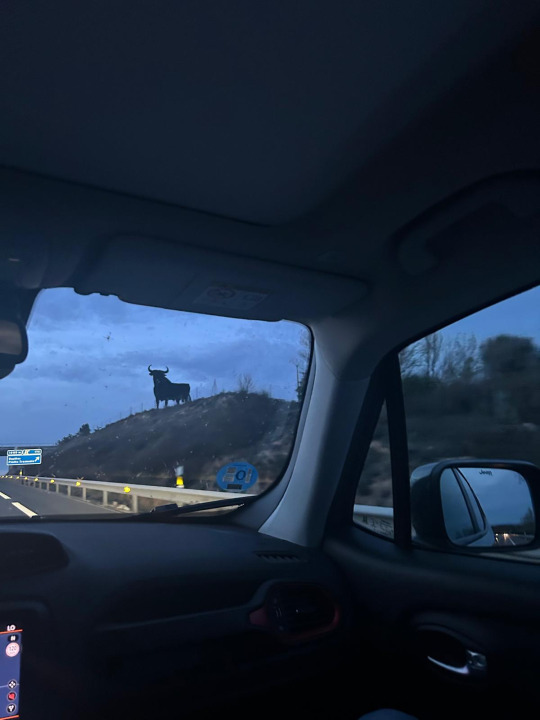
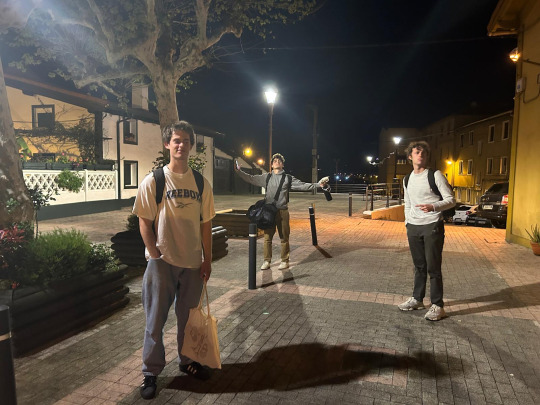
Huh? Yes, I was as confused as you probably are the first time I read that word. Especially the tx, which is pronounced as ch in Euskera, the mysterious language of the Basque people that has no known origin or connection to any modern tongue. It looks and sounds weird, and in the Basque country you’ll see it everywhere. It almost feels like it could have been spoken in some far off kingdom in Game of Thrones.
Speaking of, we went to Dragonstone, AKA Gatztelugatxe. Shout out whoever the location scout was for those scenes, because they absolutely killed it. The site was beautiful, and I think the pictures will speak for themselves.

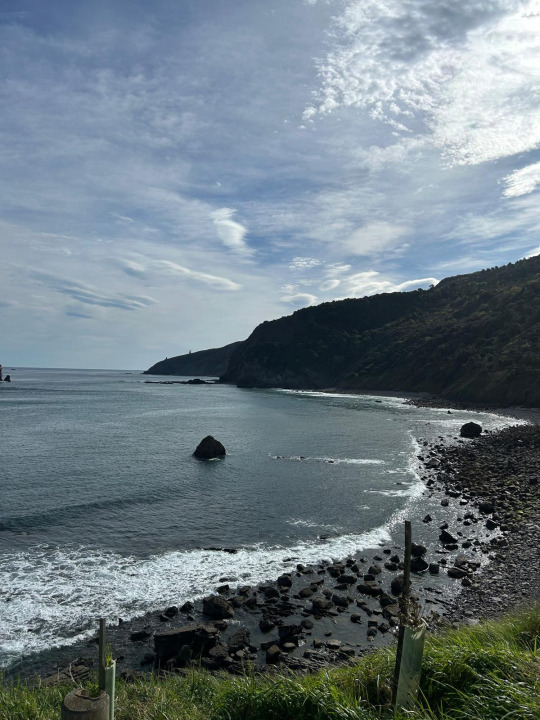

After that, we drove a few more hours to San Sebastian and explored. The energy was incredible. Sunny weather, beautiful city side beach, Burnt Basque cheesecake, calming sunset and delicious food (pintxos = tapas in Euskera!). There’s not much more that I can say other than the fact that simply walking around and taking it all in was an absolute joy.

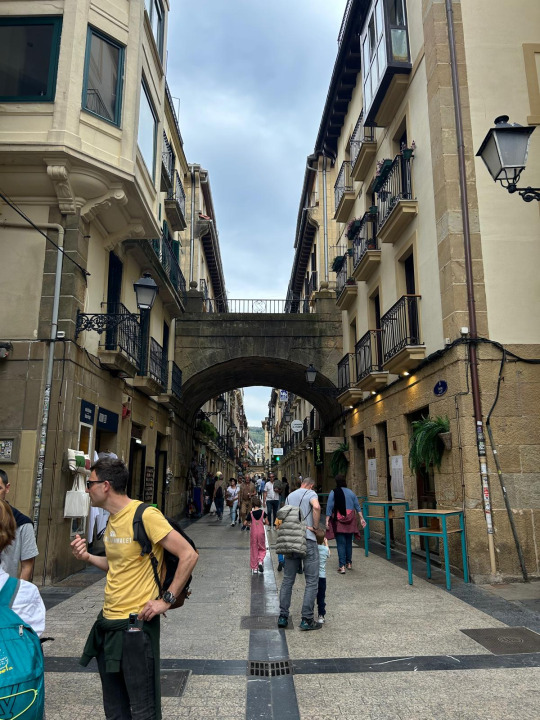


We proceeded to drive 4 hours west that evening to our second stop of the weekend: Picos de Europa national park (driving quickly through Bilbao, which has a really cool modern architectural style). We arrived at our Airbnb in the pitch black around 12 am, stumbled our way inside, cooked a comically oversized dinner (1.5 kg of pasta is too much for 4 people btw) and prepared for our big hike the next day.
The Hike
We woke up bright and early (it was like 10am) Saturday morning, ready for the 7.5 mile, 3000 foot climb ahead of us. I’d done a 13 miler with a similar increase in elevation once before in the Texan desert (Marufo Vega trail in Big Bend, highly recommend), so I wasn’t too concerned with the difficulty — only with whether we picked a worthwhile trail. I was silly for underestimating “Lon - Río Burón - Peña de Mañimoco”.
We started by driving into a tiny town in the national park, parking on the side of the road and setting off into a dirt trail that winded shallowly up the mountain. At this point, I was unimpressed. Most of our view of the mountain ahead of us was blocked by trees, and the path felt too well kept to be the basis of the true rugged backcountry experience I desired. Jokingly, we pointed to the top of the mountain we were hiking towards when we got to a clearing, asking damn, wouldn’t it be crazy if we went up there.
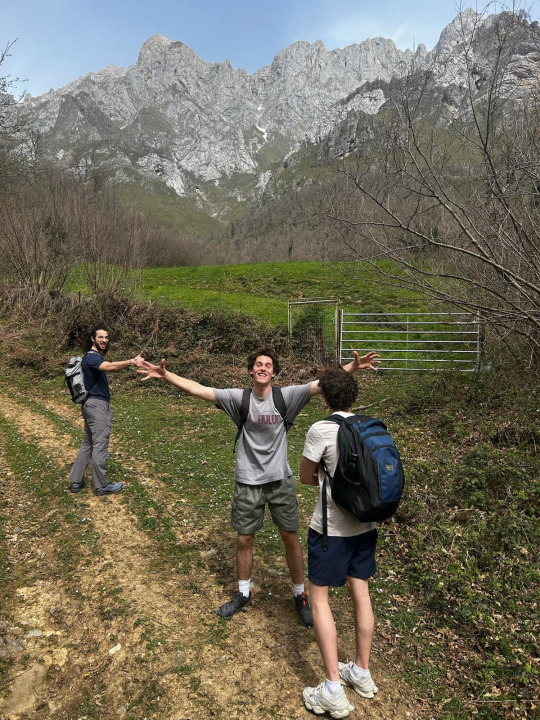
Yeah, it would have been crazy, but I guess 3000 feet is not to be underestimated, especially if you start at 1000. The paved trail split off into a smaller one once we broke through the treeline, which split off into a gravel shoot winding up the ridge of the mountain we had joked about a mile or two earlier. The wind started picking up, threatening to throw us off the mountain at any second as we climbed higher and higher (it was seriously intense wind. Jumping up, we actually caught a little extra airtime).
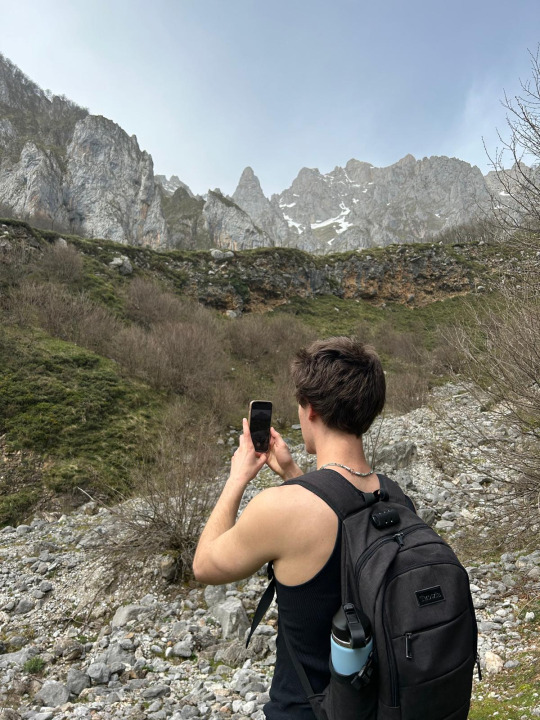
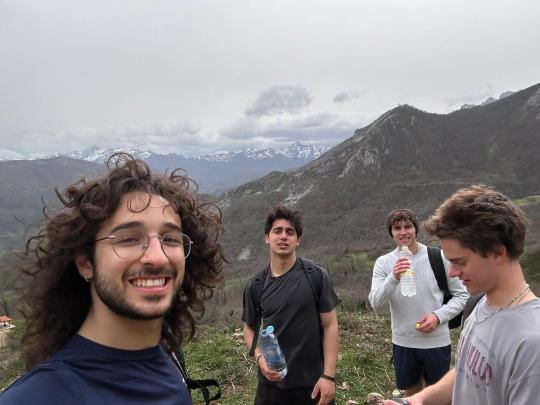
Each switchback revealed a view of the mountain and the valley below that was more stunning than the last. We passed through a huge diversity of different terrains, each so distinct they felt like Minecraft biomes stitched together. We even happened upon a herd of domesticated cows (which we were terrified of passing out of fear that they would attempt to butt us off the face of the mountain... we thought they were wild at first). At one point, we came across a meadow that looked like it came straight out of a studio Ghibli movie. We quite literally frolicked in the grass as another hiker (the only other person we saw on the trail) watched us from behind a tree, hiding from the wind. We talked to that guy later, we called him the Wind Wizard.
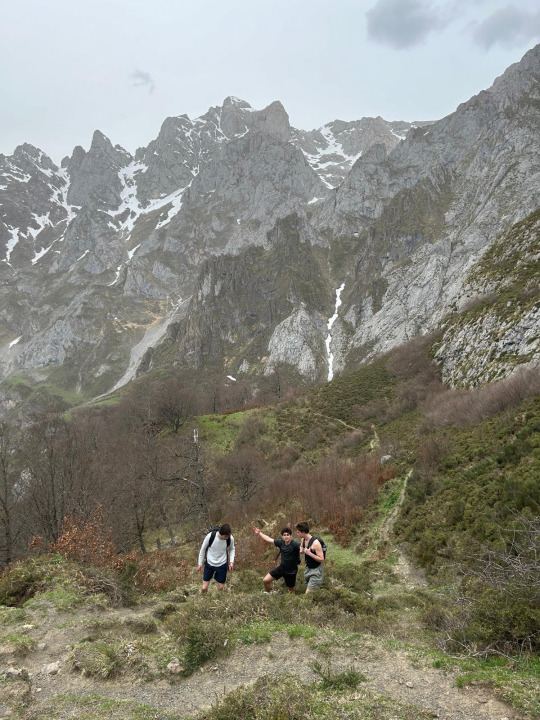

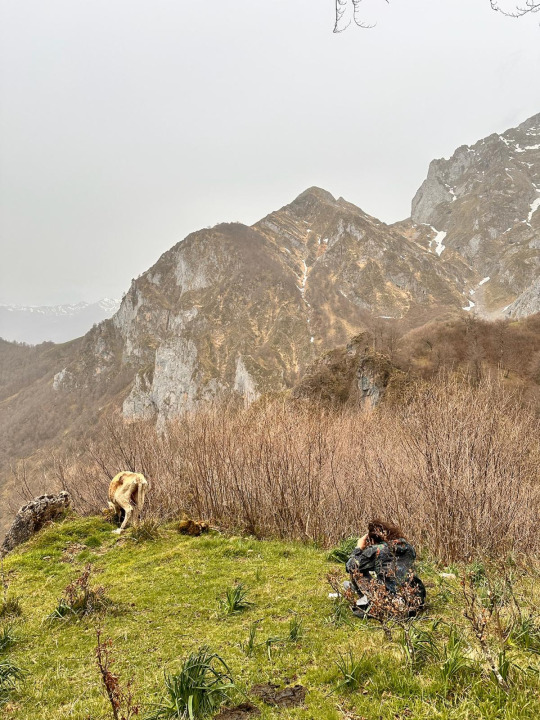
On this hike, I felt something reminiscent of the feeling I got as a 6 year old playing imagination games in the basement of my childhood home — unashamedly wide-eyed excitement. Looking out over the Picos de Europa (literally, the peaks of Europe) I couldn’t help but smile. This is the feeling I mentioned at the beginning of this blog that I think I can only experience whilst totally immersed in nature. At its core, it’s rooted in mindfulness and gratitude for the present moment -- something that I try to practice as much as possible in my everyday life.
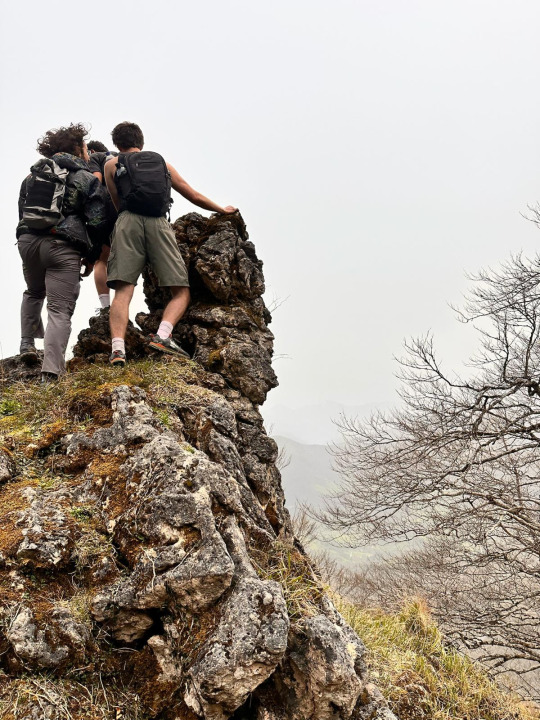
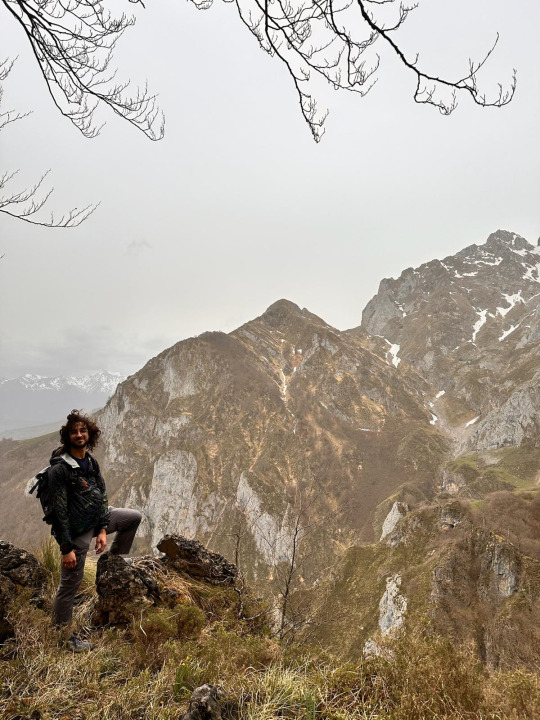
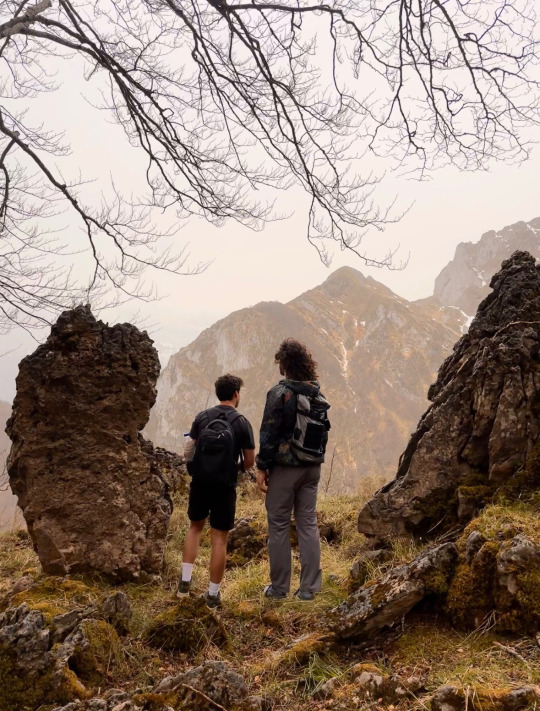
However, the reason this trip ended up being one of my favorites I’ve taken so far wasn’t just for the things that I saw — it was for the people that I spent it with. As much as I enjoy the independence and exploration of solo-traveling, I think that experiencing new things with trusted friends will almost always be more enjoyable. Being rooted in that feeling of wonder with others makes it feel more exciting, more significant, more real — both while it’s happening, and in the memories that stay with us forever.
We finished the hike with a steep decline down the mountain and ended up back at the car, where we drove into the larger town and got some drinks at a local cafe (where they had original craft beers on tap, and where I tasted the best Vermouth I've ever had). We left our airbnb early the next morning, but not before buying a block of cheese from the local Queseria (which was also absolutely fire). En fin, this was one of the most beautiful and rewarding hikes I've ever done, rivaled only by the aforementioned Marufo Vega. I think we chose well!



So, my key takeaways from this trip? Nature is awesome, and so is experiencing it (and life in general) with other people. At the end of the day, we’re just really smart animals who evolved (in nature) to be biased towards social behavior, so I guess that makes sense (#evolutionarypsychology?). I’ll be in the Bay Area this summer for an internship, and I’m really excited to go backpacking over the weekends in all of the epic nature that surrounds the area, meeting new people along the way.
Here's the itinerary list for this week's trip:
Basque Country Google Maps List
That’s all for this week’s blog! As always, check out the picture descriptions for a little more info. Thank you all very much for reading, and I’ll see y’all next week 🙂
Adios,
Niko Economos
Aerospace Engineering
Universidad Carlos III de Madrid
Madrid, Spain
2 notes
·
View notes
Text
Madrid Week 8: Surfing a singular couch
Hola a todxs! Niko back here with week 8 of studying abroad in Madrid. I just realized that I never fully explained my usual intro ‘Hola a todxs’ so I took the time to do that in a footnote* for anyone curious :).
Anyways, this week I’ll write a little bit more of a traditional blog format — I’ll talk about some recent trips I’ve gone on. For those wondering how my progress is going on waking up earlier and appreciating Madrid, I’ll report some small successes: I ventured out to study in a cafe last week and enjoyed the warmer air (spring is starting to be sprung!!), and went out to dinner in the oldest restaurant in the world last night (called El Botin) :).

This weekend, I was in Amsterdam, and the weekend before that, I was in Sevilla. Recap time.
Couchsurfing in Amsterdam
Amsterdam is a very special city. Immediately when I stepped out of the train station, I was hit with the bustling scene of Centraal — the combination of the castle-esque buildings poking up in every direction, bikers going every which way, and canals slicing through the streets created a unique energy that I haven’t felt in any other city I’ve been to. It felt distinctly Dutch, and clearly had a subculture that can only be found in Amsterdam.

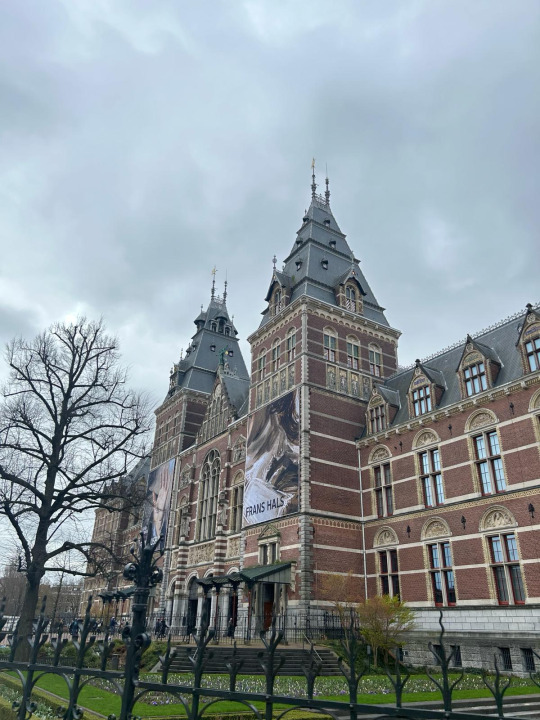

This weekend I was meeting one of my best friends Charlotte in the Netherlands, a friend I’ve had since middle school who’s spending her spring break in Europe. She arrived on Saturday, so I had the time to explore the city solo for a little bit before she arrived.
The second thing that struck me about this city: everyone speaks English, and they all speak it very well. Although the same can be said about many young people in countries in Spain and Italy, in the Netherlands, English almost felt like the default — not Dutch. There was not a single time that I felt the uncomfortable feeling of being disrespectful for not attempting to speak the local language, and there was not a single time that I came across someone that I couldn’t communicate with. Learning English has clearly been ingrained in the culture of the Netherlands (along with many Nordic countries), which calls attention to the question of how this occurred in the first place. At the very least, it makes tourism much easier.
The first thing that struck me: bikes. If you’ve never been to Amsterdam, the first thing to know is that everyone bikes everywhere, all the time. It’s said that pedestrians rule the streets in NYC. In Amsterdam, bikers rule — there’s actually more bikes than residents in the city. There’s bike lanes everywhere, and you’ll never be farther than a 20 minute trip to any centrally located destination.
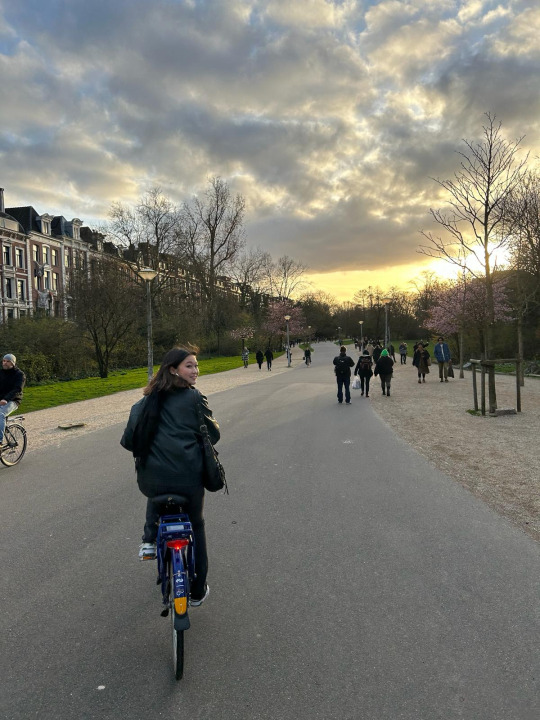


So naturally, I rented a bike, and I felt pretty awesome joining the hoards of commuters zigzagging through Amsterdam. I made my way over to the Van Gogh museum, which I can confidently say now was my favorite museum I’ve ever visited.
I took a trip to Amsterdam with my family when I was around 10 years old and actually visited the Van Gogh then, but I can’t say that I remember it too much. Now, with 21 years under my belt, an appreciation for art, and a greater understanding of the human experience, the main exhibit in this museum quite literally brought me to tears.
Something about the way this museum told Van Gogh’s story through his art — from his starting place, through his simultaneous progression as an artist and mental health struggles, to his ultimate suicide — really touched me. I could really feel the emotion Van Gogh had imbued into his paintings with his brushstrokes and colors in a way that I had never felt looking at visual art before. The painting “Almond Blossom” was a highlight — a painting that Van Gogh considered to be one of his best works, which was a gift to his nephew. I would highly recommend a visit if you enjoy impressionist art.

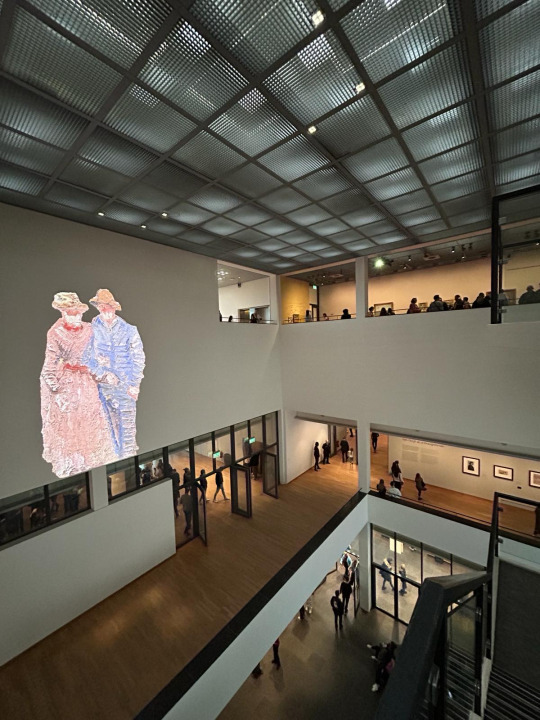
On Saturday, I explored the Rijksmuseum (which is massive) before Charlotte arrived. When her train got in, we found each other and went together to meet our host for the weekend: A film student at the University of Amsterdam named Tassos, who hails originally from Athens, Greece. Tassos graciously offered up his pull-out couch for us to sleep on for the weekend, in his apartment overlooking one of Amsterdam’s many canals.
So, how’d we connect to our gracious host in the first place? Through a website called couchsurfing.com. Couchsurfing is an app that connects its members to a global community of travelers. Hosts can offer up their home for travelers to stay in free of charge, and travelers can message hosts to find lodging (and connection). Couchsurfing communities in various cities also organize events — meetups, tours, even parties — for members of the community to join at their leisure. People use couch surfing to meet interesting people, form connections, and to exchange stories/wisdom, all of which is right up my ally.
Admittedly, the idea seemed sus to me at first. You have to have trust that your host will be truthful, responsive, and safe to spend time with. The reference system alleviates this greatly (you write reviews of the people you spend time with), but the process still requires a healthy amount of trust. From Charlotte and I’s interaction with Tassos leading up to our trip, I had built up a good amount of trust — and that paid off last weekend.
A clear pattern is emerging from my travels: experiencing cities through the guidance of a local enhances the experience 100 fold. No matter how much research you do, there’s such a large part of cities that can only be discovered through lived experiences — which, oftentimes, is where the most direct connection to local culture can be found. This connection is what I seek wherever I go, and is something I felt greatly staying with Tassos this weekend.
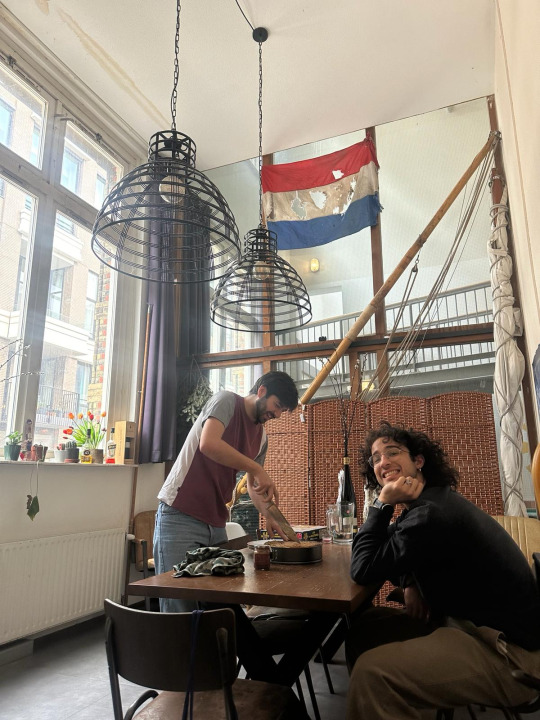
Over the course of the weekend, Charlotte and I explored the city and its parks (highly recommend Vondelpark) on our bikes, shared delicious home-made Pastitsio with Tassos (his grandma’s recipe), went to the largest flea market in Europe (I got a sick Matrix-style trenchcoat), ate tons of delicious food (someone say stroopwafel?) and went out to an amazing community centered techno party in the outskirts of the city. It was wonderful to spend time with Charlotte outside of Virginia, and connecting with Tassos through our shared cultural background, interests, and life experiences was fulfilling. You can only get so close to someone over the course of a few days, but I know that I’ve made an friend that I’m looking forward to crossing paths with again sometime in the future, wherever that may be.

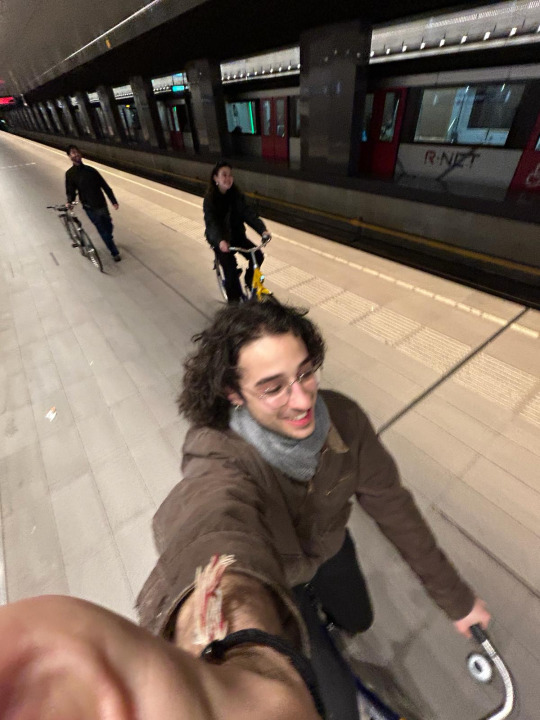




(Not so) Sunny Sevilla
I know that I’ve been mentioning this trip for a long time in these blogs without actually talking about any of the details, so I think it’s about time. Sevilla is a city in the south of Spain, famous for its flamenco, sunny weather, interesting architecture, and distinctly Andalucian vibe. This was a trip organized by CEA, the company managing the study abroad program I enrolled in with IPE. Me and around 80 other students in the program took a short train ride down to get there, lodged in a nice hotel (amazing buffet breakfast), and got to take a few tours of the major sites to see in the city.
It never rains in Sevilla — except, somehow, the one weekend we were there. It put a bit of a damper on our first two days, but it made the last 1.5 all the more marvelous when the sun finally shone out from behind the clouds. I figured that telling the details in the form of pictures might be more interesting (and would help keep the word count of this blogpost down a bit). Check on the ALT description for more details on the trip :).



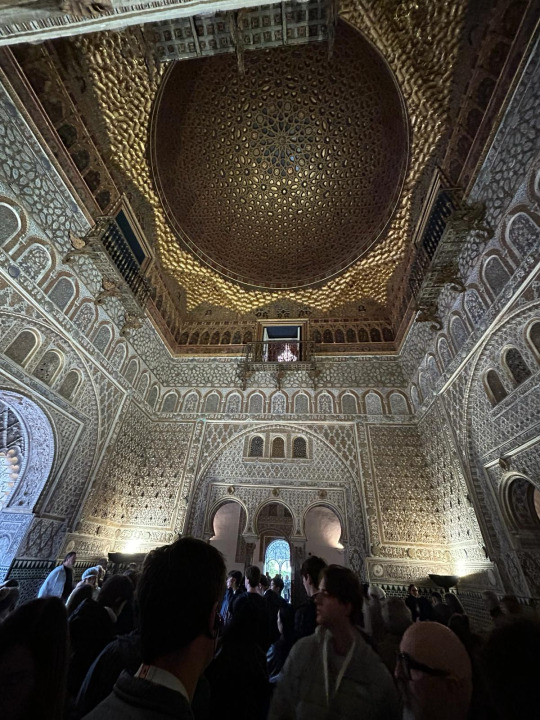




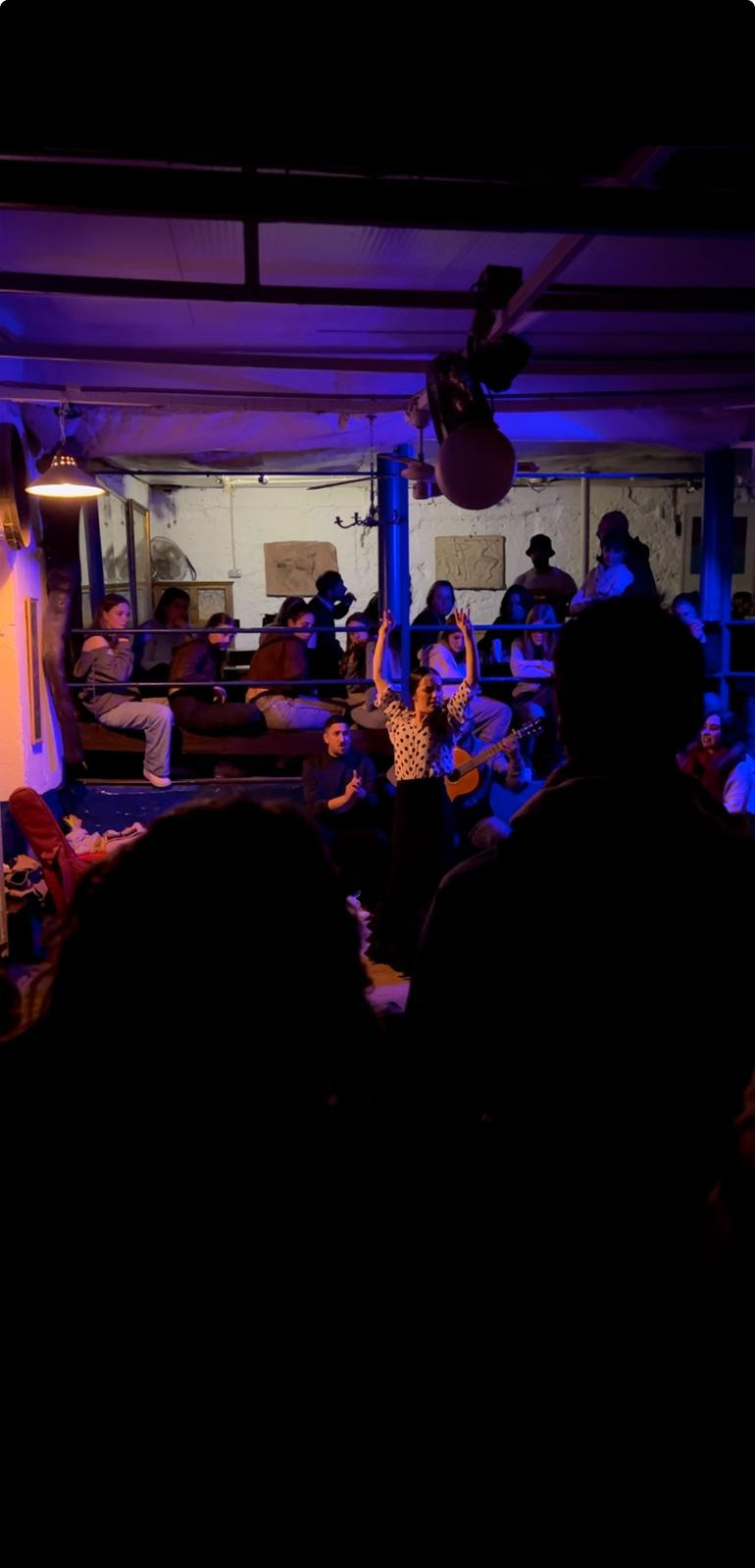

Making lists has become (yet) a new hobby of mine this semester. I bookmark all of the places that I visit and write little personal notes to go along with them with two goals in mind: one, that I might keep a better digital footprint of my trips so that I can remember them better (especially if I ever want to return). Two: for all of you! If just one of my lists can help one of the readers of this blog find something worth seeing, I would be more than content.
Here's Amsterdam...
and here's Sevilla!
As always, don’t hesitate to reach out with questions about more specific recommendations/vibe checks for any of the cities I go to.
Hasta la proxima semana!
Niko Economos
Aerospace Engineering
Universidad Carlos III de Madrid
Madrid, Spain
*Hola a todxs translates directly to “Hello to all”, or “Hello everyone”, which is simple enough. However, the x in the final word might seem out of place — why do I use it? The word todxs is usually written as todos or todas, as many nouns and adjectives in Spanish are gendered. When you see an x at the end of a Spanish word, it’s likely because this word has been made gender neutral, which exists outside of the accepted rules of the Spanish language but is widely used in online communities and in the media. An @ symbol is also commonly used (tod@s). In the gender neutral form, the x/@ is pronounced with an ‘e’ sound, so we would say “Hola a todes”. Consequenly, some words like ‘amigxs’ can be written as ‘amigues’ so as to take a more ‘normal’ looking form. Now you know!
2 notes
·
View notes
Text
Madrid Week 6: The Honeymoon Phase
Hola a todxs ‼️‼️ Niko here again, and welcome back to week 6’s blog of my study abroad experience in Madrid. This post is a little more text/personal reflection heavy. We'll get to some more fun stuff next week :).
This past week was filled mainly with schoolwork and cooking — not too much exploration of the city — and I stuck mainly to my established routes between home and university. However, looking forward, I think that this routine will be significant in my international experience, too.
For the first few weeks living here, I got out as much as possible and tried my best to take advantage of everything Madrid had to offer. Trying all the cute cafes, seeing all the tourist attractions, exploring new neighborhoods, going out to all the clubs. But now that I’ve been here for a month and a half, it feels a bit like I’m actually ‘living’ here, and less like some kind of extended vacation.
I actually have schoolwork to do now — projects, papers, presentations — and that leaves me much less time to simply exist. I think I can take that as both a blessing and a curse. For one, it’s a curse, because in reality, I would love to just skip around Madrid all week without any responsibilities, who wouldn’t?
But now, I think I’m living more like how a student would who’s here year round. Let’s be honest — are Michigan students constantly going around Ann Arbor, discovering all the little nooks and crannies, experiencing all the most hyped up spots and exploring all the paths less traveled? Not really. Maybe I’ll hit the Kerrytown farmers market or the Blind Pig on a weekend, but honestly that’s few and far in between. Majority of my weekends at Michigan are spent around campus and at home.
I don’t want to say we’ve “become complacent” with Ann Arbor, because that inherently has a negative connotation. But we’ve certainly gotten used to living in this city, and simultaneously have tons of other things on our plate that we’ve got to attend to. Things aren’t as shiny and exciting as they were the first month of freshman year, and we simply have less time. It feels like something similar is happening here in Spain, for both reasons (although maybe to a lesser extent — I still have more free time than I do in Michigan, and Madrid is still, well, Madrid, Spain. Not quite like Ann Arbor, Michigan, USA).
Now, my perspective of Madrid has shifted slightly, and with it my experience. Maybe one could say my “honeymoon phase” is over, but to be honest, I haven’t really started to find a lot of things I really dislike about the city. Things are just a little more like real life, which I think I'll end up being happy for.
As some of you may know, I studied abroad over the summer after my freshman year in Buenos Aires. That program lasted 6 weeks, and I stayed an extra with my parents after the program ended. School wasn’t as demanding, and I had ample free time all week. Those six weeks were incredible. It was my first time living outside of the United States for an extended period of time, my first time ever living in a big city, my first time immersed in another language and culture completely different from my own.
Upon reflection, I think my ‘honeymoon phase’ lasted all 7 weeks of my experience in Buenos Aires. And now, I’m reaching week 7 here in Madrid. I’ll be here for a total of 15.
My experiences in Buenos Aires and Madrid have been similar in a lot of ways. The architecture of the cities, the language, the general warmth of the people and culture. Simultaneously, they’ve been different in more ways than I can count, and I think a big one I'm slowly transitioning into will be due to the amount of time that I have here.
Now, I’m left with an awareness of the challenge that comes with living in a foreign city, in a culture completely different from my own. In a class that I’m currently taking, 'Social groups and their cultural imaginaries', we had a lesson on Italo Calvino’s Invisible Cities. One of the main themes of the book: Our interpretation of a city or landscape is based on how we are feeling, or what we want at that particular moment.

How will my experience of this city change with my perception and feelings towards it? What will I desire then, and what do I desire now? How will I interact with Madrid in week 15? How will that be different from week 1?
How will I continue to adapt to Spanish culture? What pieces of US culture will I still be holding on to, and what pieces of my identity will change?
Will I continue to find excitement and novelty in this place in week 15, or will I have to make an active effort to do so? Will living in Madrid at week 15 feel like living in Ann Arbor, or Arlington VA? Or are the places and cultures so different that the experience will never be comparable?
Will this lifestyle be something that I want to continue, or will I find that I’m most comfortable in the culture and community I grew up with?
I’ve asked a lot of questions here, most of which I have no semblance of an answer to. Some of them are small, some of them are pretty big. I’ll plan on coming back to this blog, maybe in week 15, maybe in a post-reflection — and I’ll try to answer as many of them as I can. Just writing them here increases my awareness, which enables more active reflection and growth in my day-to-day life.
One action item I’ve realized after writing this blog: I need to start taking a more active effort during the week to continue appreciating Madrid for all it has to offer me. At first, it came really naturally, but now, it’s harder. Moreover, as I’ll be traveling around Europe for the next few weekends, I’ll have less chances to experience Madrid without the pressure of everyday life squeezing around me.
Taking an active effort means giving myself more opportunities to be mindful, present, and appreciative of the environment I’m in. That includes waking up earlier and trying to establish more of a schedule with schoolwork, which will give me time to do things like going out on walks to take photos in the morning, or finding a new bar to enjoy a drink at during the evenings. Also, I hope to start meditating again — which has been something that has served as a point of stability for me throughout college.
Transition periods are never easy, and I've found myself in one yet again. The best advice I can give myself for now is to remain appreciative and accepting of all of the everything lives throws me, knowing that each one is an opportunity for growth — and I'll come out the other side more experienced, wise, and grateful that it happened.
In other news, this week I saw Dune 2 (highly recommend, ESPECIALLY in IMAX), kept cooking, and did a good amount of studying. Also, this past weekend I went to Italy (for the first time ever) and spent the weekend with an old friend. I’m headed to Sevilla this weekend, and I’ll detailing both a little more in next week's blog. Wishing everyone a happy hump day and a strong finish to the week.
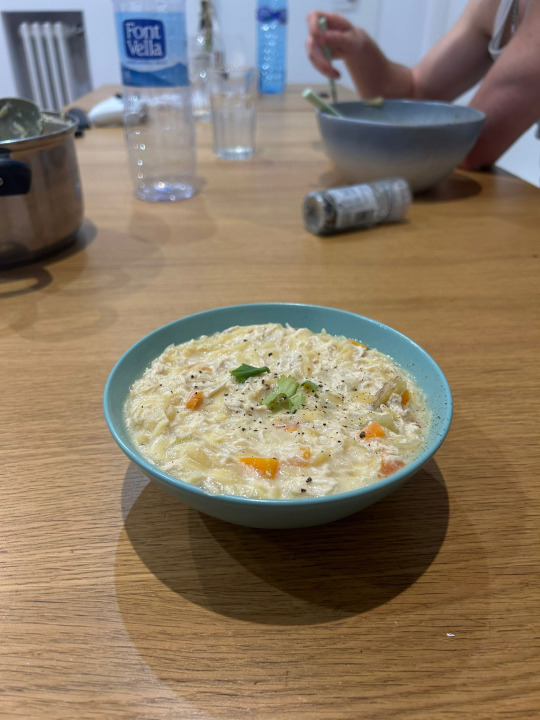


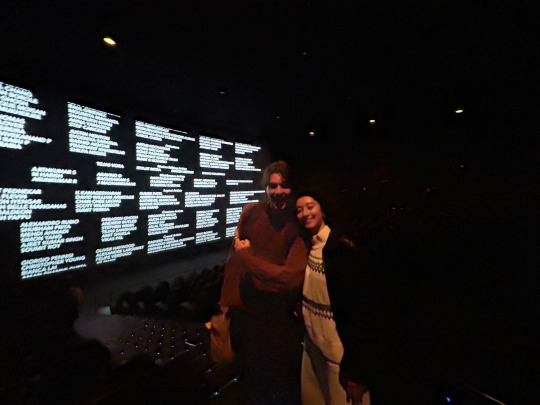
Hasta pronto,
Niko Economos
Aerospace Engineering
Universidad Carlos III de Madrid
Madrid, Spain
3 notes
·
View notes
Text
Madrid Week 5: I been in the kitchen, whippin, whippin (cheffin?)
Holaaaa a todxs otra vez! Niko back here with week 5 of the Madrid blog, sorry that I’m a day late :). This week’s blog will have less to do with Madrid/Spain/Europe/culture, and more to do with a little personal project of mine while abroad: learning how to cook (well).
I’ve always had cooking as a part of my life, and that’s thanks to my Mom, who always made the most delicious meals growing up from all sorts of cuisines. On a typical Sunday evening, my Mom would pick a recipe — either something new, or a family classic — and enlist me and my sister’s help in preparing it for the whole family. I learned a good amount this way: how to dice an onion, how to chop an onion into slivers, how to caramelize an onion… along with various other skills that don’t have anything to do with onions.
In high school, right before COVID hit, I decided to teach myself how to bake bread. It seemed like a kind of impossible task, of sorts — something that only professional bakers who woke up at 5am knew how do to, or grandmas who somehow always had the skill. I don’t remember how my first loaf turned out, but I’m guessing it was just good enough, because I found a new passion in baking from that point onward. I kept challenging myself to go for more complicated pastries, culminating in my proudest buttery achievement: a 3 day baking marathon that yielded some perfectly flaky homemade croissants.
In baking, I found joy in the precise imprecision of it all.
Many people I know have told me that they see baking is a science; All of the ratios have to be perfect; There’s no room for error. While it’s true that if you add too much flour you’ll dry out your dough, or if you overload on the butter you’ll end up with a crispy puddle instead of a cookie (that also destroys your baking sheet) (speaking from firsthand experience), the more I practiced, the more I was able to bake using feeling and intuition instead of trusting a recipe. I could tell what dough felt like when it needed a little more kneading, or what it looked like when it had risen just enough. Through baking traditional Greek breads and desserts, I also found a new avenue for connection to my heritage. The gratification I received when I got a delicious final product — and one that I could share with family and friends — was all that I needed to continue having fun with the hobby.
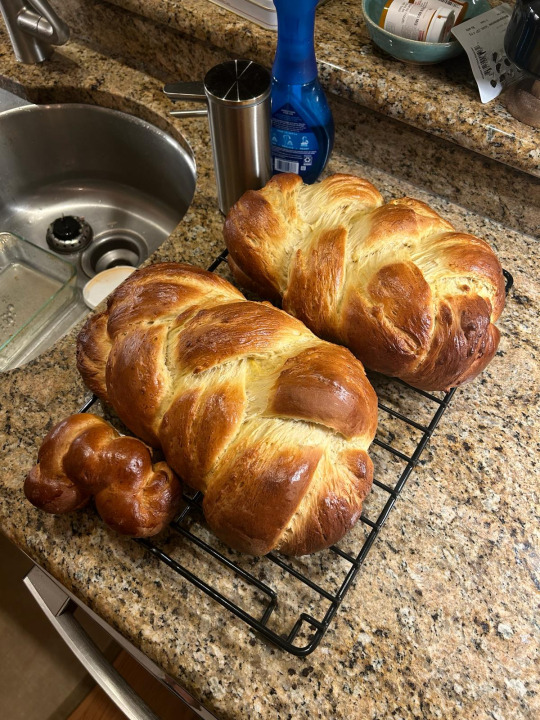
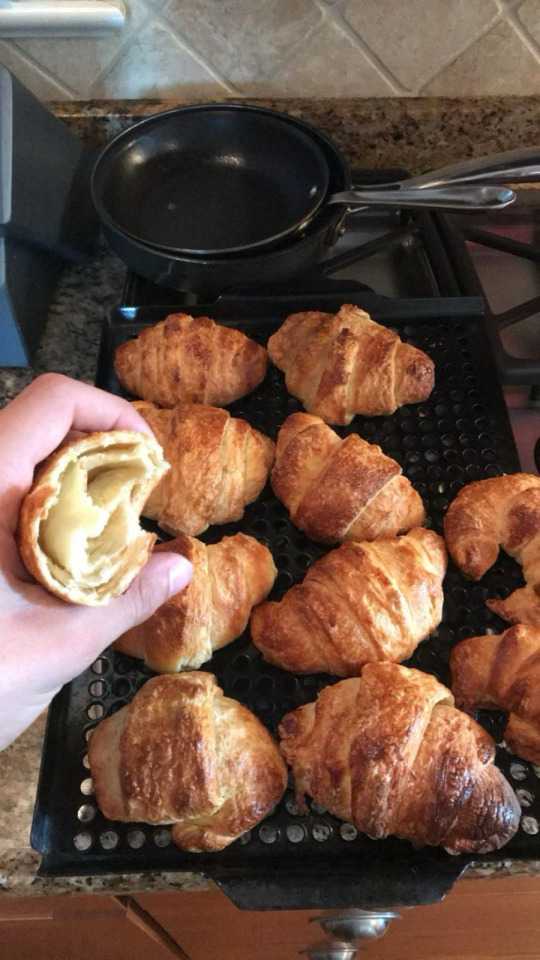
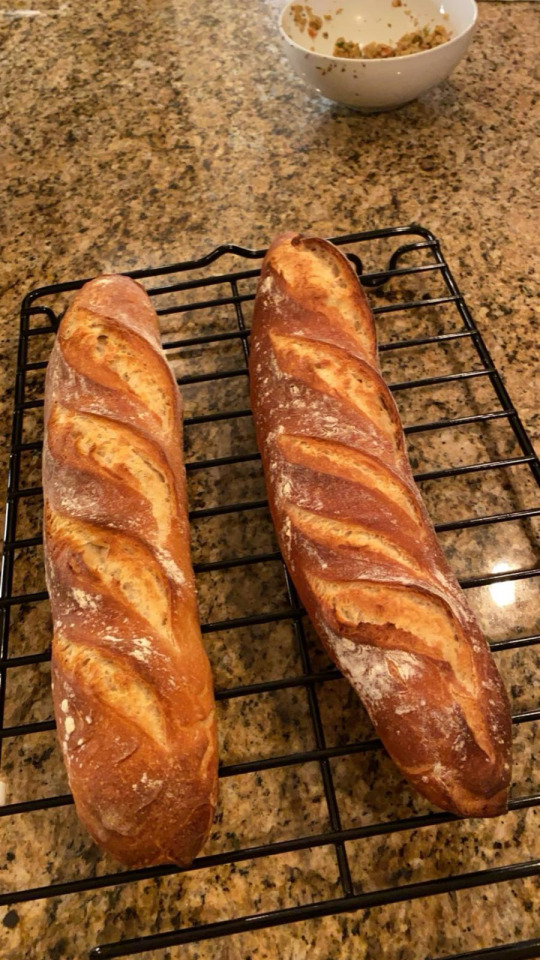

Now, flash forward a few years, I’m a freshman in college. I’m in a dorm (Bursley T_T ), no kitchen access in sight, and eating exclusively in dining halls. Baking fell to the wayside, aside from the casual holiday cookie produced during breaks. Flash forward another year, I’ve got an apartment with a very functional kitchen — but now I’ve overloaded myself with classes and other extracurriculars, bought a dining plan, and treated mealtimes as activities to be completed as efficiently as possible so that they wouldn’t interfere with everything else I had to do in a day.
Needless to say, I wasn’t doing much baking, and the same was true with cooking — once a week I’d maybe make some dry chicken breast in a pan with some crudely chopped red bell peppers and call it a night. Last semester, fall of Junior year, at the peak of my business with school and extracurricular responsibility, I found myself in the kitchen even less.
I was satisfied with this rhythm. I enjoyed dining hall food for the most part (much to the surprise of most friends), and I really was saving time that I spent on other things. However, part of me looked at friends that were regularly home-cooking delicious, healthy meals for themselves (or for their entire co-op) and felt a pang of jealousy. Mealtime can be a sacred ritual for connection — both with yourself and with others — if you want it to be, and that was something I wanted to be able to foster.
The turning point in this cooking journey revolved around Monday night game night, the CFB championships, Michigan vs Washington. My cousin had invited me and my sister over to watch the game, with the promise that he would chef us some of his world famous confit chicken wings. My cousin is probably one of the best freehand chefs that I personally know. If you give this man some simple ingredients and a couple of spices, he’ll pull out some random cooking technique I thought only existed in high end French bistros and make some truly creative — and delicious — food, based solely on his experience and earned intuition. I think of him and flavors kind of like Remy from Ratatouille with the cheese and the strawberry, y’all know what I’m talking about.
This was the type of cooking that I had always sought after but never figured I was capable of without going to culinary school. Impressive, but something that only professional chefs who woke up at 5am knew how to do, or grandmas who just always had the skill…
Before leaving my cousin’s house (and after Michigan had won the natty 😎), I asked him how he learned to cook freehand so well. He told me that, although he had always been around cooking in his family, his skills truly blossomed when he was abroad in London for a year — when he was forced to cook for himself. He mastered simple dishes, without using recipes — pan seared chicken breast, roasted vegetables — which served as a launching pad to trying more and more complicated dishes, each time committing the cooking experience (and result) to memory and drawing upon it for the next plate.
So, flash forward to present day. Essentially, I said “Bet.”
I’ve got a bunch more time now that I’m abroad, and groceries here are significantly cheaper — meaning I can get more ingredients at a higher quality and set aside a few hours to truly explore. The first week or two, I was pretty much just doing chicken and red bell peppers, and maybe some rice. But since then, I’ve started exploring a little more — risotto, Bolognese, spatchcock chicken, basted steak — and the process has been incredibly enjoyable. I can feel some sense of intuition forming, and I find myself relying on recipes less and less with each meal cooked — having my baking experience as a backdrop gives me confidence that I'm on the right path.

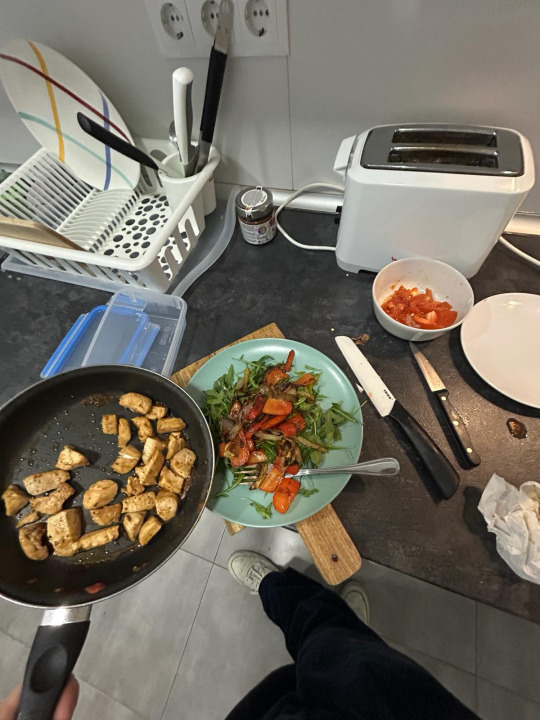


dishes from my first week or two cooking freehand
Those that know me well know that I find a lot of pleasure in learning a new skill. To be honest, I do a lot of random stuff that doesn't really have much of a common thread, which is why I’m somewhat of a “Jack of All Trades, Master of None”. Cooking freehand is the newest addition to that list of random skills, but I think it’s one that’s here to stay. Not only is it fun and delicious, but incredibly utilitarian.





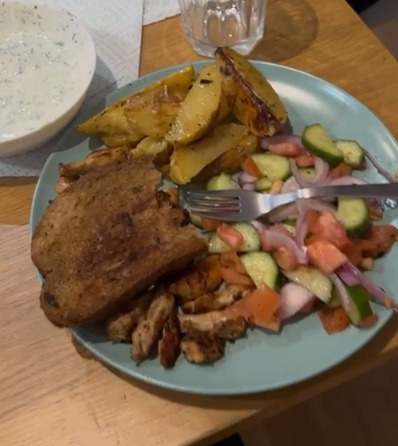

In the words of my cousin: “It means you’ll never have to eat bad food... Not everyone wants your homemade candles or scarves, but everyone can f*ck up a home cooked meal.”
Facts.
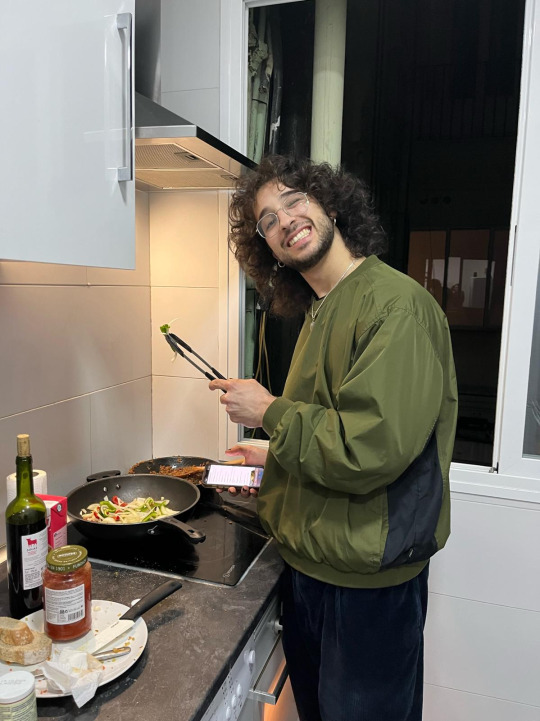
The biggest item on my food to-cook list is to make Avgolemono soup with homemade chicken broth, which is a Greek soup dish that holds a special place in my heart — one that my grandma made all the time. Stay tuned for the results in a future blog. Per usual, check out the image descriptions for a little inside scoop on the meals I've cooked so far.
In other news this week, I saw one of my favorite DJs Interplanetary Criminal, continued on with classes, and some friends from Arlington VA, my hometown, visited for the weekend from their other study-abroad-cities in Europe (including Emma, who's house I stayed at in Granada!).
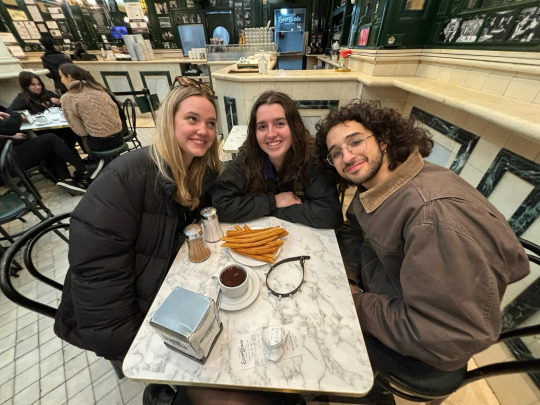
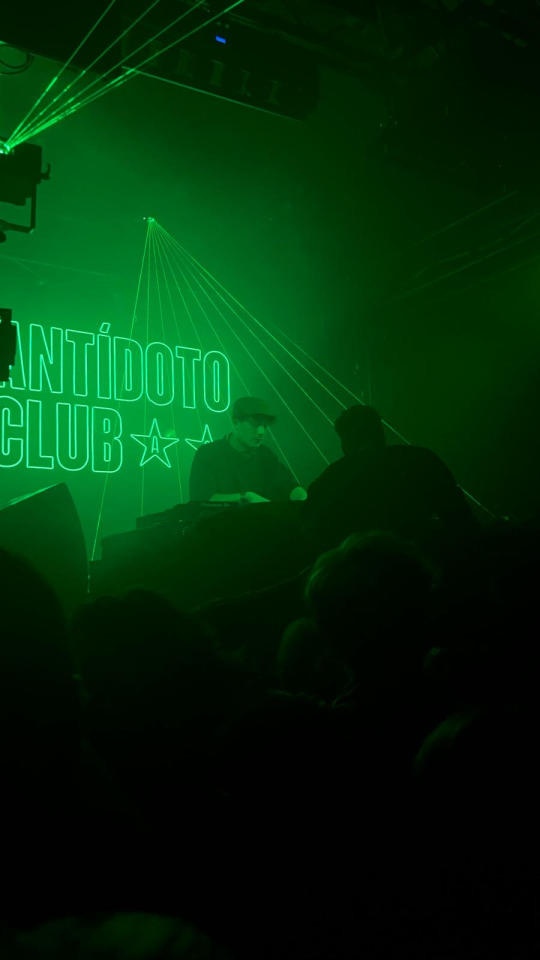

See you all again next week!
Hasta ahora,
Niko Economos
Aerospace Engineering
Universidad Carlos III de Madrid
Madrid, Spain
2 notes
·
View notes
Text
Madrid Week 4: the rhythm of the night
Holaaaaa otra vez!! Niko here again, back with another blog for week 4 of studying abroad in Madrid! This week marked my official first month in the city, which means that I’m 1 month down of 3.5 (or 2/9ths of the way through). I wonder how my perspective of the city and life here will have changed by the 4/9 point, by 8/9 point, and when I’m finally gone. I guess we’ll both have to wait to find out ;).
This week, February 13th, was my birthday. I turned 21 years old — which is a pretttty big deal in the United States. 21 is like the final frontier of birthdays. After that, anything (except for renting a car, for some reason) (and also running for president) is possible. Order a beer? Done. Get into a club? No problem. Is it weird to me that we can join the military before those things? Yes, but I don’t know enough about the prohibition era to make a substantial claim on the laws we have in the USA.
Being that it was a Tuesday and I wasn’t quite in the partying mood, I went out for a nice dinner with a friend and bought myself churros for the walk home -- perfect birthday tbh. However, an American in America turning 21 will typically go out, buy alcohol legally, get into some bars with their actual ID (maybe Rick’s for my UMich people, which is finally on-limits :0 ), and likely get very very drunk with their friends. In Spain, that doesn’t happen for 21 year olds — or 18 year olds, for that matter.
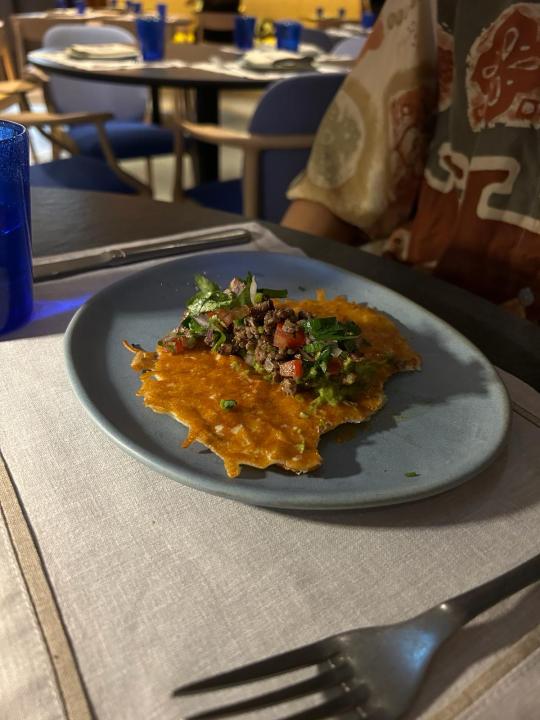
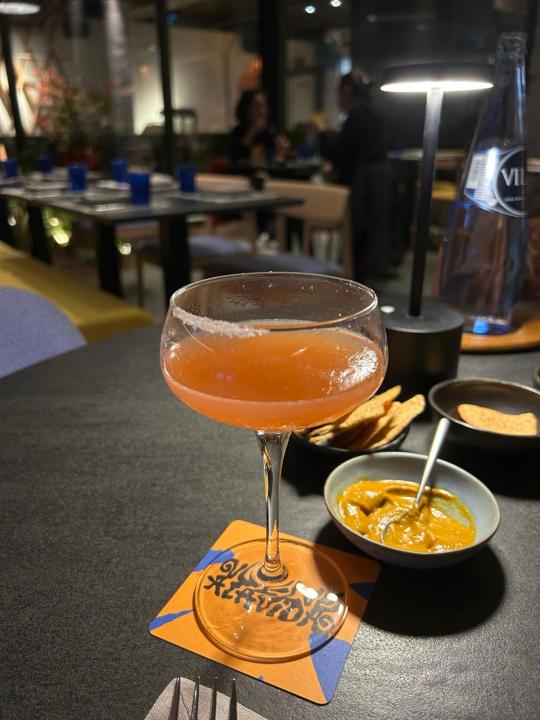
I think that the basic differences in drinking culture between the USA and Europe are somewhat well known. To generalize: binge drinking is much less common in Europe; people may drink more but pace themselves out over the course of many hours; people start partying late and stay out much later. However, living in Spain and experiencing the nightlife firsthand has given me a new understanding of this culture — and I’ve found that it’s a rhythm I really enjoy.
An Aside on Work-life Balance
In Madrid, the people place a lot of value on social life — which lasts throughout adulthood. I think that in the United States, social life ends up giving way to work for many adults as they get older and their career becomes more demanding. In Spain, people subscribe moreso to the ideal of “working to live” instead of “living to work”.
This is a generalization, but I think it’s a fair one to make in comparison to the culture of the USA. This perspective may be a product of the bubble I live in as a student studying abroad, but the "competitive, always-searching-for-the-next-opportunity, never-staying-complacent (satisfied?)-with-your-current-position" vibe is something I have not yet felt or witnessed here. I think that difference can be explained in part by the USA's strong capitalistic nature (and Europe's slightly more socialist environment), but I'm no expert ¯\_(ツ)_/¯.
I don’t think that I want to subscribe fully to either ideal.
I don’t want my work to be my life. I think that I value a lot of things higher than money — relationships, new experiences, personal growth — and that's where I want to focus. However, working is an unavoidable part of life for (almost) everyone. I think that treating the idea of work as a career — something to be developed, something to find passion in, something that adds to your life instead of taking away from it — will enable me to live a happier life. And, to become truly satisfied in my career, I’m gonna have to put in that effort.
I think that the key to maintaining a healthy relationship towards work is deriving that hard-work mentality from within, instead of from the pressure of outside influences (living up to expectations, competition with others, greed, etc). In this way, achievements will be something I can be proud of myself for -- especially because I did those things in alignment with my own contentment and happiness. Admittedly, this conclusion is spoken from my "very wise" position of having had only 1 full time internship and a few part time service jobs, but this is where I'm at with my experience pursuing a college degree. Guess we'll see how it turns out down the road.
Nightlife
Anyways, back to partying in Madrid. House parties don’t really exist like the do in the USA, or frankly, at all. This is partly because there’s an ordinance that prohibits loud noises indoors at night, and partly because there’s no need for them — there’s a seemingly infinite amount of bars and clubs to go to, on every night of the week (yes, including Sunday, Monday, Tuesday, and Wednesday).
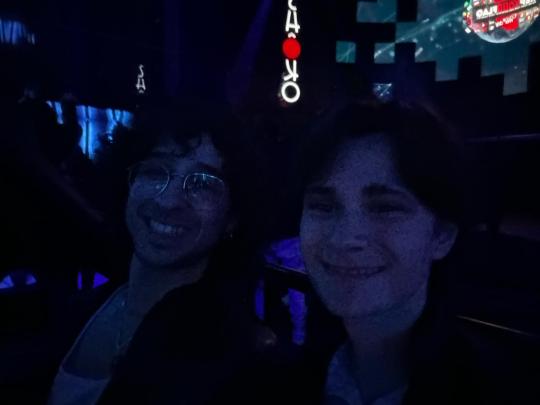
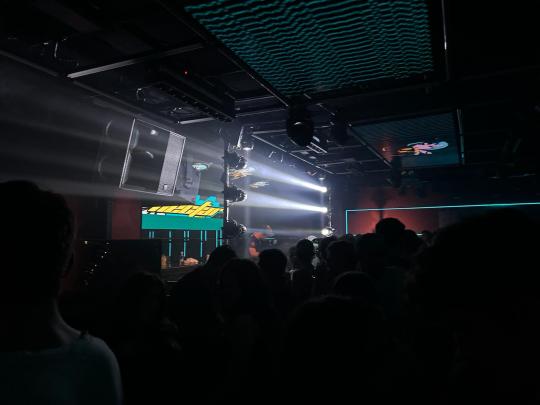
First, you’ll have dinner, shared with a group of friends and never earlier than 8pm — usually closer to 10pm. Pregames (previas) might happen at someone’s apartment, they might happen on the street, either on the way to the club or in a group just chilling (botellon). In general, (especially with young people), as much alcohol as possible is consumed outside of the club, for economical reasons. A beer bought at the corner store is half the price and twice the size than at the bar. The streets in Madrid, especially on the weekend, are always lively. Simply walking around popular areas is an energizing feeling.
If you’re going out dancing to a club, you might also hit a few bars beforehand, which are more commonly frequented a bit earlier in the night - 12am ish is peak.
Like I mentioned previously, things also start late. A club will not be in full swing until 3am. If you arrive to a club at 12 (which is when most of them open), you’ll be dancing alone on the floor. This is in stark contrast to the USA, where at 3am, you might be dancing alone because everyone else has already gone home. Things will start to wind down around 5am on weekends, and a dedicated group will still be around at 6am when the lights turn on to kick everybody out.
Personally, I love this rhythm. Starting so late, you get a full day in beforehand — and much more time with friends spent during the night. Drinks are consumed slowly, and far fewer will end up on the toilet at the end of the evening. Things feel more relaxed, less like we're on a time crunch — probably because there’s simply more time to party.
I’ve only got one big qualm in comparison to the USA — sleep. If you’re out until 6am on Saturday, you’re probably sleeping until 3pm at the earliest. Which kind of throws off your Sunday. If you were looking to grab brunch, or god forbid be productive, forget it. But maybe, a loss of productivity isn't such a big deal. I would love to hear from you all what you feel about the work/productivity culture in the USA, and how you perceive (or have experienced) it in different cultures.
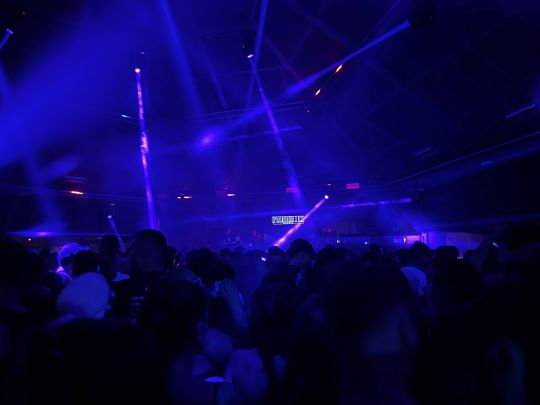
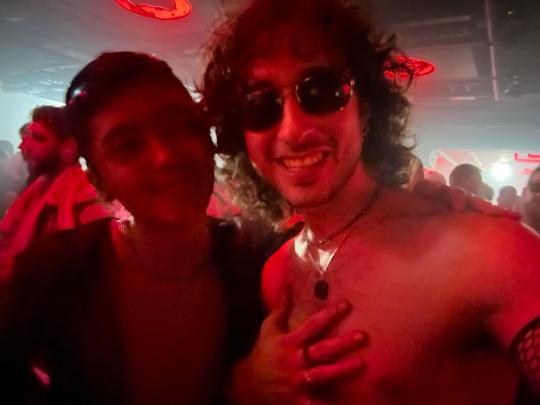
So, needless to say, I have been partying a good amount, and I think I’ve been doing so in a pretty authentically Spanish way. I’ll spare details on my escapades, but I’ll include some pictures (along with some more in depth descriptions) that may give a little insight into the ~vibes~. I’m a big fan of electronic music, and Madrid’s scene for that is vast.
For anyone reading this that’s going to Madrid sometime soon — either for studying abroad, vacation, or whatever else — I’ve been putting together this list of all the nightlife sites I’ve gone to, with little descriptions on my thoughts accompanying each one. I hope it serves at least a few people well, and spares them the work of finding the places that are a little less obvious to non-natives.
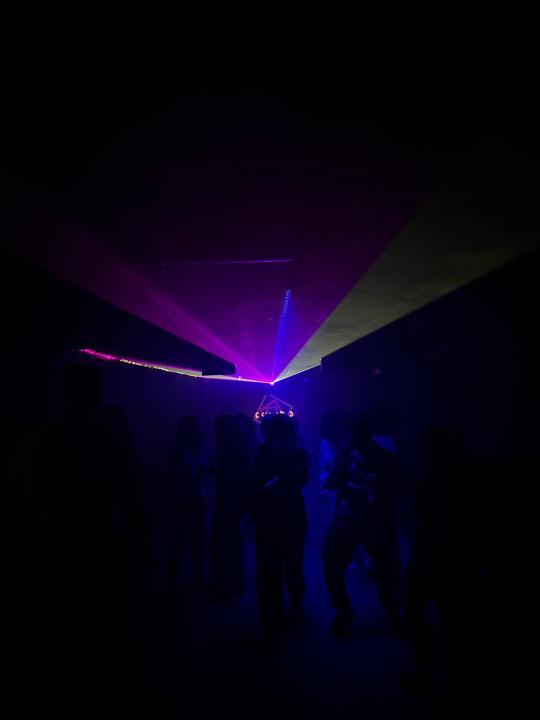
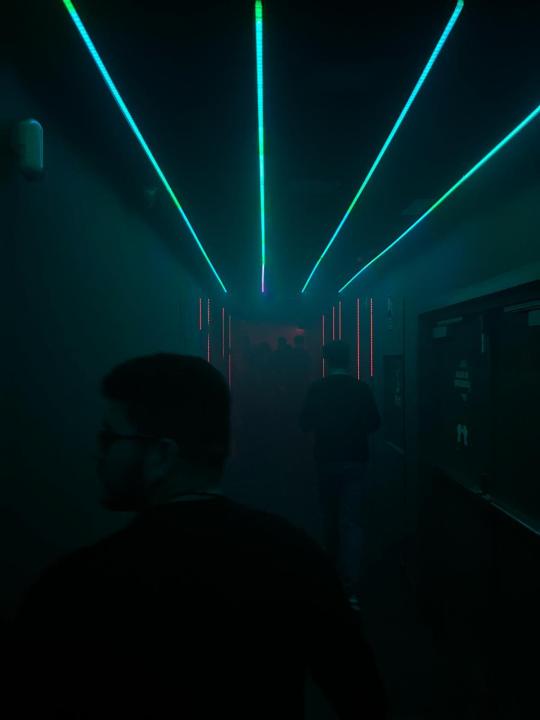
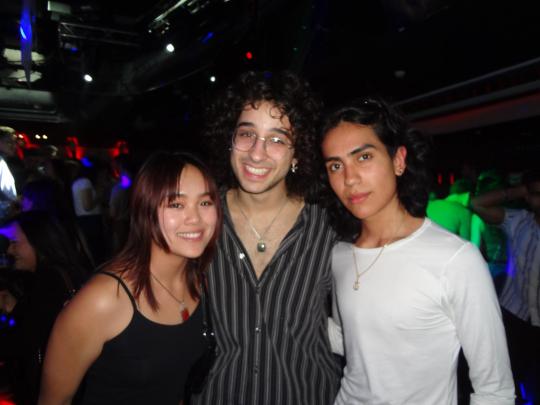
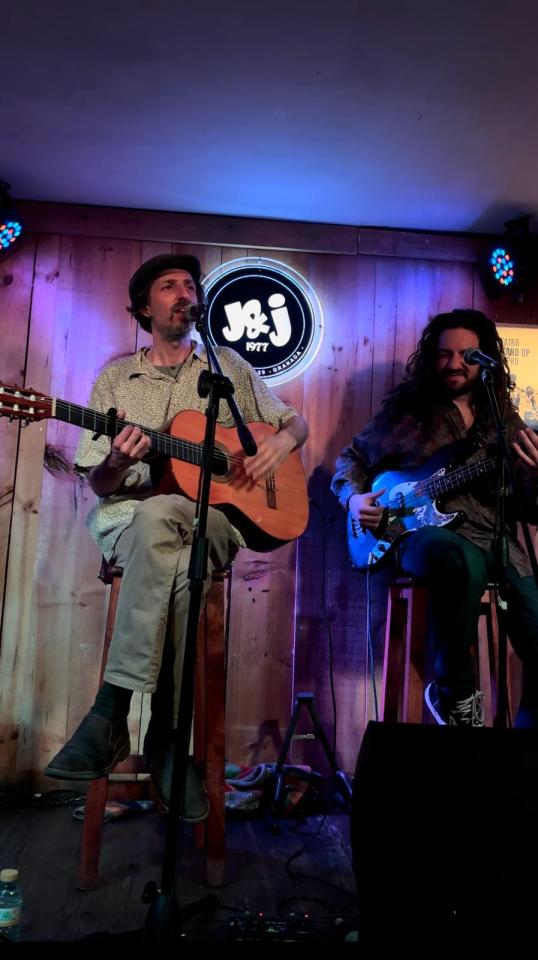

Hope everyone has a fantastic week! :)
Hasta luego,
Niko Economos
Aerospace Engineering
Universidad Carlos III de Madrid
Madrid, Spain
3 notes
·
View notes
Text
Madrid Week 2: Taking Time
Hola a todxs! Niko here again, back for week 2 of studying abroad in Madrid. This week felt nearly as long as my first one in the city. Class started on Monday. Thankfully, schoolwork has been pretty light thus far, so I’ve had the spare energy and time to focus on adjusting to the new schedule, commute, and teaching/class style at UC3M, all while attempting to make new friends with Spanish, American, and International students from across Europe (and Oceania!). Also, I took a weekend trip to Granada in the southern region of Andalucía — more on that later.
SCHOOL STUFF (ACADEMICS?!)
With the first week now under my belt, I wanted to quickly touch on my academic experience so far in Spain. This semester, I’m taking a Spanish language class for international students, and three classes in English for a both national and international students: “Social groups and their cultural imaginaries” (a mix between philosophy and culture, INTERHUM 300 equivalent), “Materials Science and Engineering” (MATSCI 220 Equivalent), and “Databases and Structures” (EECS 400 Level Equivalent). Given that I pass 🙏, all of these classes should count towards my degrees (aerospace engineering major, international minor for engineers, computer science minor).
School at UC3M is quite different than it is in the states. Most notably, the grading system is unfamiliar. At Michigan, a big emphasis is put on required assignments that are due throughout the semester — homeworks, problem sets, mini projects, etc.. These required assignments force students to continuously engage with the content, which I feel improves focus and learning (if the assignments are completed with the right intention). At Carlos III, the final exam constitutes 60% of the final grade for the vast majority of classes, with the remaining 40% of “continuous assessment” depending on things like in-class quizzes and one-off assignments.
With no homework to keep me on track, I’m gonna have to pay close attention to make sure my classes don’t fall to the wayside with all of the 1,000,000 other distractions in Madrid (and Europe) vying for my attention. I’ve already decided to switch one class (Neural Networks) because I thought it would require a level of effort that I simply wasn’t prepared to put in while I’m abroad with bigger priorities than school (namely, exploration, self growth, meeting people, etc.).
This is a shift in itself that I’m going to have to get used to — for my entire life, performing well in school has been at the top of my list. However, while in Spain, all I need to do is pass (get a 5/10, 50% overall) for my credits to transfer with no effect on my GPA, so that’s what I’m shooting for now. I’m certain that this will cause some internal conflict (e.g.: a 60% on [x] quiz?! Oh no!!! tbh math 216 already got me over those bad grades tho lol) when things start to pick up, but I guess we’ll cross that bridge when we come to it.
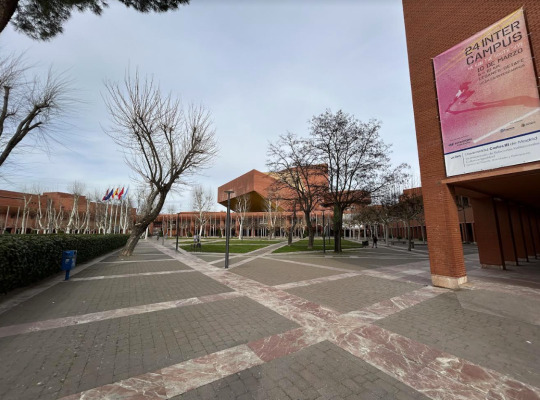
ON RELATIONSHIPS
Going into my study abroad experience, my biggest goal was to understand the culture of Madrid & Spain from a local point of view. I knew from studying in Buenos Aires that living in a different city can be a much more enriching experience than touring it for vacation, so long as I put in the effort. A big part of that goal was to make friends with people local to Madrid, along with other Americans*/ International students who shared that same mindset. I think that in explicitly setting this goal, I inadvertently put a lot of pressure on myself to make all these friends really quickly, in an environment and language I’m unfamiliar with, all while trying to adjust to and internalize a major lifestyle shift.
As a result, I think that — up until this week — this self-imposed pressure gave me unnecessary anxiety that inhibited me from being my true self. I spent time worrying about whether the Spanish students in my class would like me, if my Spanish was good enough to communicate with them, if they would judge me for being an American, how soon I should message the new person I met in the cafeteria so I wouldn’t appear too clingy… the list goes on. I was stressing and strategizing to make friends, when the best strategy is always to just be myself.
This is a lesson I’ve learned during my transition to Michigan, but being implanted into a new environment and University gave me a bit of a factory reset. I had to remind myself that I’ve only been here for 2.5 weeks. Directing my attention inwards instead of outwards will enable me to be fully present (and able to overcome the initial discomfort of making new relationships [see week 1 for discussion on discomfort]) when people that I can click with inevitably come along. Through this process, I’ll undoubtedly develop a stronger relationship with myself and increased comfort being alone, which is another personal goal of mine.
Funnily enough, that’s how things started to turn out in the second half of the first week. When I caught myself overthinking and was able to redirect my focus, I slowly started to reach out and become more friendly with some of the Spanish students in my culture class, and I met a group of Spaniards by chance that I really vibe with at the club on a Wednesday (oops, sorry it’s syllabus week :P ). Simultaneously, I’ve begun to get closer to some fellow American study abroad students. By no means have I found the perfect group of friend-soulmates that I’ll proceed to travel and experience Europe with for the rest of my 17 weeks in Spain, but that wasn’t something that I was ever expecting, anyways. Moving forward, I’m going to do my best to avoid resisting flow, always assuming positive intent to keep myself open to new interactions (check out what I mean by this by watching this video clip from a speech Mark Rober gave at the MIT graduation, I highly recommend the whole video), all the while prioritizing my own peace and happiness.
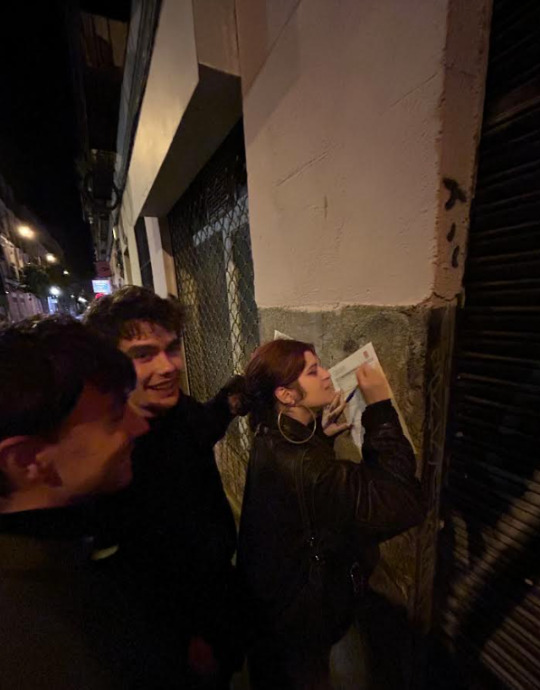
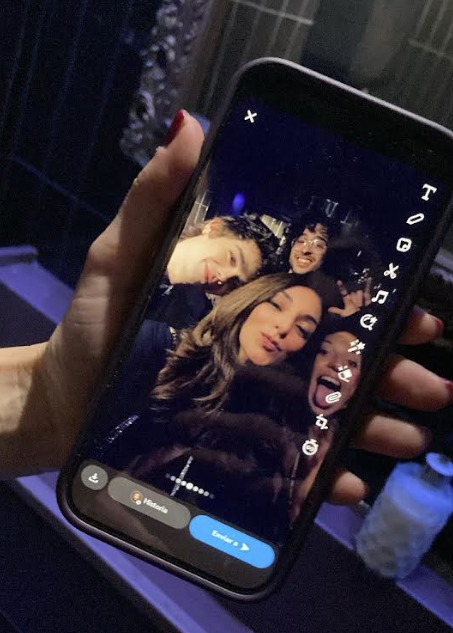
This weekend, I also visited Granada, a small town in the south of Spain famous for its Moorish influence and the incredible La Alhambra palace nestled in its hills. I might cover the trip in more detail next week, I guess we’ll see… but it was a beautiful weekend filled with beautiful architecture, beautiful sunsets, and great company. Per usual, check out the photo captions for some more context.
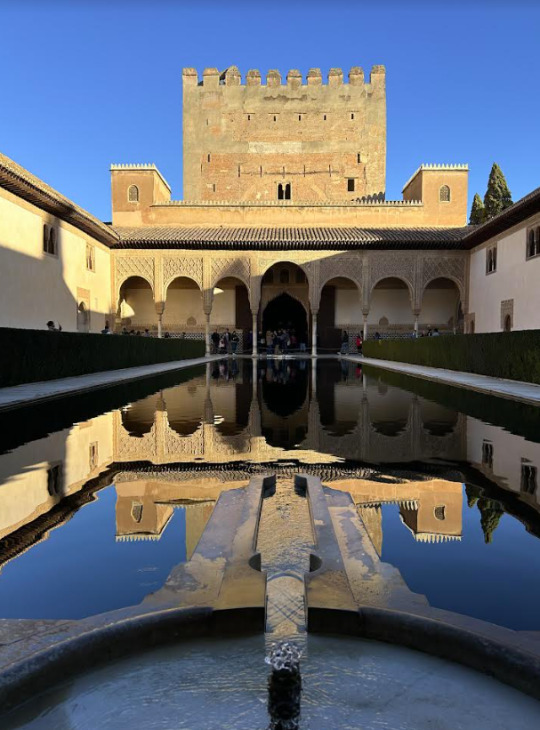

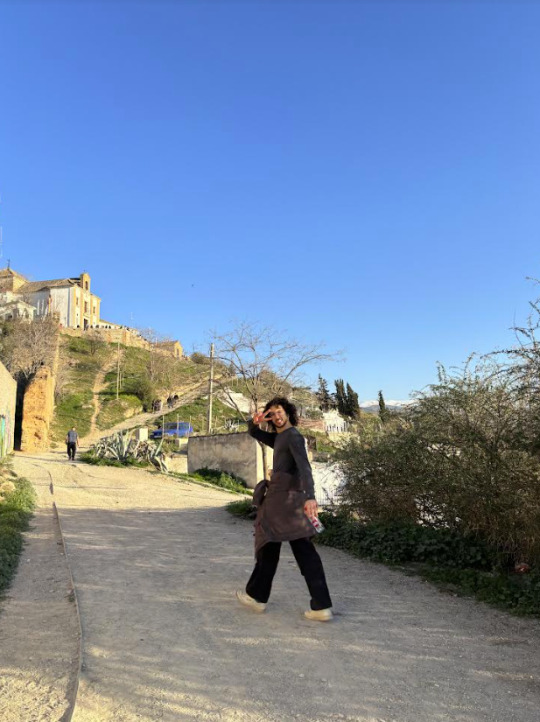
Until next week :)
Niko Economos
Aerospace Engineering
Universidad Carlos III de Madrid
Madrid, Spain
*A LONG ASIDE ON THE WORD “AMERICAN”, for context & completeness
I would like to be clear about my use of the word "American". In English, there is no succinct way to say “Person from the United States of America”, unlike other nationalities (Spaniard, Argentinian, Norwegian, etc). American is the best word that we have. However, in conversations about US culture with people from other countries, I’ve been met with a similar critique in multiple instances (both with Europeans and South Americans). The Americas include the entire continent of North America and South America, which encompasses a huge variety of countries, cultures, and nationalities. When saying the word “American” while describing a person from the United States, we are inadvertently reinforcing the narrative that the United States is the most significant country across both continents and thus more righteously deserves the blanket term “American” over any other country in the region.
This conclusion is obviously more nuanced than what I’ve stated. The United States of America uses the word “America” in its name, which is likely where this blanket term came from. Also, I don’t think that the perpetuation of this US-centric language is due to intentional individual action, but rather a result of complicated cultural and etymological phenomena which I don’t have a comprehensive understanding of.
I won’t stop saying American in these blogs — primarily because saying “person from the United States” each time would likely distract from the points I'm trying to make — but I felt that an acknowledgement of this common criticism was important. In Spanish, Estados Unidos = United States, and US citizens are more precisely described as “Estadounidenses” (although the word “Americano” is still commonly used). When introducing myself to people from other countries, I always do my best to use the most precise language possible when referring to my nationality, which is one of the many ways I practice cultural humility. Stay tuned for another blog sometime this semester about how I go about practicing cultural humility, something that I think is very important for Americans who come from one of the most — if not the most — influential countries on earth (something that has also become apparent through my conversations).
2 notes
·
View notes
Text
Madrid Week 0: Stealing Grocery Bags (Goals & Reflections)
¡Hola a todos!
My name is Niko, and I’ll be blogging this semester from now until June for the CEA IPE program at Universidad Carlos III de Madrid, or UC3M.
Some quick background about me: I’m a current junior studying aerospace engineering at Michigan; I’m minoring in computer science and the international minor for engineers. I beatbox in an a cappella group, I love to rollerblade, meditate, and make pottery, & I’m a huge Bad Bunny fan (top 2% of listeners worldwide, not to flex).
My goal for writing this blog is twofold: one, to share my experiences in Madrid (and Europe when I travel around) with you all. I’ll be writing about sights I’ve seen, activities I’ve done, situations I’ve gotten myself into, and what they all made me feel. For all the prospective study-abroaders reading this, I hope you gain some insight into what studying and living in Madrid is like — and please feel free to send me an email at [email protected] with any questions. For all of my friends and family reading, I hope you enjoy staying somewhat up to date with my life while I’m away, and please don’t hesitate to reach out — I would be happy to get a more in depth account about anything I post. Also, don’t hesitate to reach out with suggestions of what you might want me to blog about. I’m open to all ideas!
My second goal: dive deeper into how all of these experiences are affecting me, and figure out how I can learn and grow from all of them. I find that when I journal about something, it helps me sort through my thoughts and feelings surrounding it. This allows me to figure out how I can use these experiences to inform my actions in the future and move closer towards being the person that I want to be. This blog might serve as a pseudo journal for me; I’m gonna try to write a short focused piece on one experience each week and see what I can get out of it.
So, as I boarded the plane to Madrid (having gone through a crisis of deciding which bag I was going to bring as my personal item just hours before [I am a chronic over packer, but I will improve this semester mark my words] ), I was feeling a mix of excitement, nervousness, and uncertainty.

It’s now day 2 of being in Madrid, and after going through the trouble of losing a bag in transit (which has since been delivered back to my apartment thanks to our awesome doorman Mario), I quickly started to experience culture shock, naturally. Most notably so far: feeling extremely embarrassed when I accidentally tried to steal a bag at the grocery store — you have to pay for bags in Madrid, and I took an extra right in front of the cashier. She wasn’t so happy.
Although I’ve been to Spain once before for a week with my Spanish class in 8th grade, things are all very unfamiliar — the pace of life, my surroundings, the people, the way you recycle, the language (although I’m happy that the 52 hours listening to Bad Bunny have served me well, I’ve found that I’m able to communicate with locals pretty fluently), among many other things. During this period of culture shock, I’m gonna try my best to pull from the biggest lesson I learned studying abroad in Buenos Aires (an amazing city, btw, highly recommend) the summer after my freshman year — lean into these uncomfortable situations. Adapting to Argentinian culture helped me learn that these situations are never a matter of life or death. Overcoming my ego and “putting myself out there” got me into some of the most incredible, memorable experiences that I’ll carry with me for the rest of my life.
So, I’m gonna do exactly that this time around, and I know that feeling more comfortable is only a matter of time. I’m excited for all of the people that I will meet, places I will see (most pumped to return to La Sagrada Familia, stay tuned for that), experiences I will become a part of, and I’m excited to continue writing this blog!
Un beso,
Niko Economos
Aerospace Engineering
Universidad Carlos III de Madrid
Madrid, Spain
P.S. Don't forget to check the ALT/Image descriptions for a little more insight into what these photos are, especially if I don't talk about them in the main body :)


2 notes
·
View notes
Text
Madrid Week 9/10: Viva Italia (Part 2… part 2!)
Hola a todxs! Niko here, back again from where we left off in the last post discussing my Spring break in Italy. Let’s jump right in.
Hitting all Cinque of the Terres
Cinque Terre is a region of towns on the Northeast coast of Italy. You’ve probably seen a picture of it at some point. Colorful buildings, seemingly tumbling down the mountain and falling into the bright blue of the Mediterranean sea. There are five towns, each of them are incredibly picturesque, and each of them have a similar yet distinct energy.
I first arrived to Monterosso al Mare. The day was a bit rainy/foggy (as opposed to the typical warm, sunny, summery energy you can glean from online pictures), which actually ended up adding to the vibe. Especially early in the morning when many tourists hadn’t arrived, I felt extremely at peace. I hadn’t been to the ocean for a really long time, and the salty air, rhythmic crashing of the ocean, and wind slipping across my face transported me to a somewhat movie-like trance where I could forget about time and just explore.

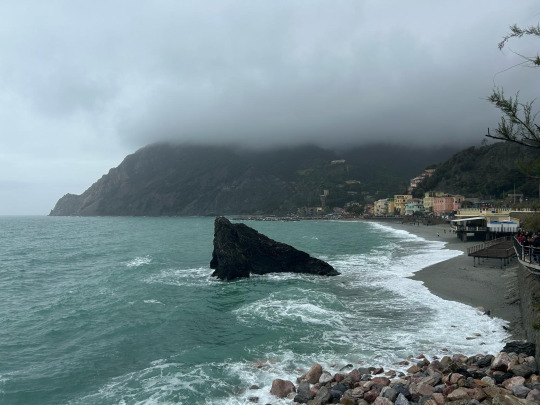
Around 2 and a half hours later, Shea, my host in Florence, met me in the next town over called Vernazza, and we explored it together. The same vibe carried through, and the sun even peeked through the clouds for us, creating glittery pockets of light over the ocean. Corniglia is nestled in the mountains as opposed to the sea, and we got delicious pesto there (pesto is famous in Cinque Terre). Manarola is the most picturesque of the towns (at least in my opinion -- the image of Manarola had been engrained in my mind of what Cinque Terre was like, and it was surreal to see it in real life), and we got some delicious fried fish and local wine in Riomaggiore.
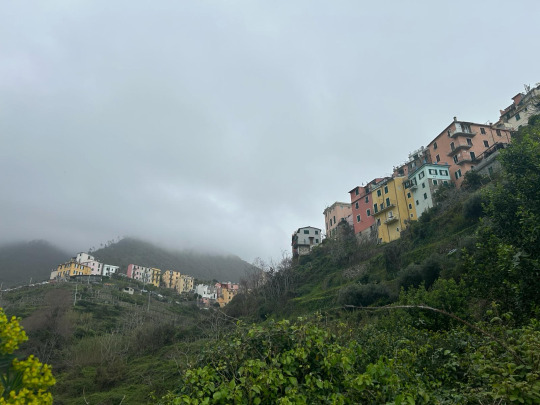
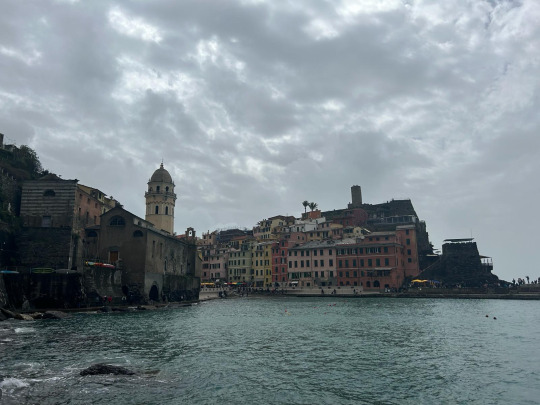
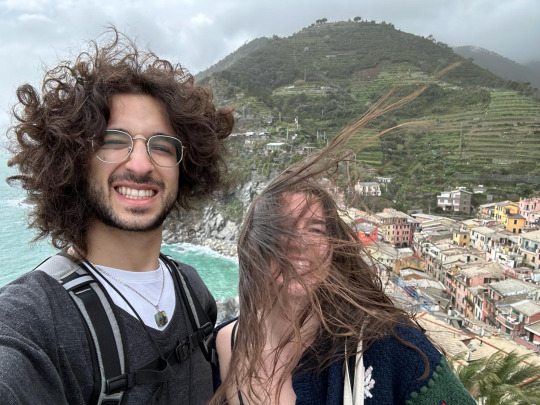



The one downside of Cinque Terre: the tourists. Especially right when a train stopped, the amount of tourists seemed to overwhelm the skinny streets of the miniscule towns, taking away from the peaceful sea-village energy that was likely once very prevalent before Cinque Terre was popularized. It was an interesting thought, especially knowing that we were contributing to this tourist-caused shift in energy. How do we balance sharing the beauty of places like this with the world with the consequences that ultimately come with their discovery?
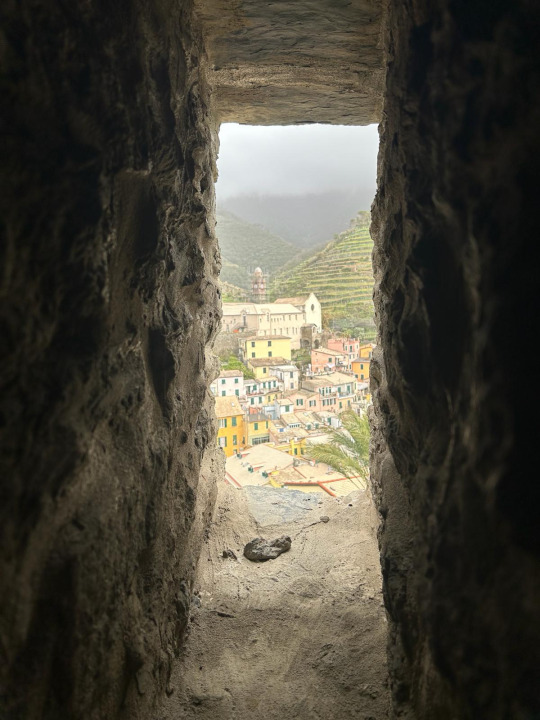

1 hour in Verona
Verona was a quick stop. I went there because I got a cheap flight out of the Verona airport to Madrid, much cheaper than any nearby city. I had basically an hour between when my train arrived and when I wanted to be at the airport, so I walked around with a huge duffle bag on my shoulder to see some of the sights (very tiring). They have a mini colosseum, the house that inspired Romeo and Juliet, and some pretty picturesque castle-on-a-hill views. Honestly, I wouldn’t feel the need to go back, but I’m glad I got to see it.



Reflections
All in all, spring break was incredible. Combined with my trip visiting Gaia earlier in the semester, I think that (barring the South of Italy, which is a whole world in itself and would probably require another week) I can say that I’ve experienced Italy and its culture. So many of the things that I saw were objects that only existed as images in my mind for such a long time, and last week, they materialized in front of my eyes. Not only did I have the opportunity to see them, but I had the opportunity to experience them, which I think I did mindfully — with some nuance, of course.
A day or two ago my friend sent me a Tik Tok while I was telling her about my trip that I wish I had seen beforehand. The main point of the video: most of us live our lives like it’s a to-do list. By the end of it, we should have a sense of community, engage in some great hobbies, land a fulfilling career, see the world and its wonders. A list of items to be checked off, so that we can say “yup, I’ve done that, I saw that”. This short video claimed that many of us live life like it’s a mission to be accomplished — forgetting to enjoy it as it happens. I think I agree. As cliche as it sounds, sometimes, we focus too much on the destination and forget to appreciate the journey. The journey is where life happens.
For those of you who know me, you know that I’m all about mindfulness, living in the present, staying grounded… inner peace woo woo type stuff. Also, if you know me, you probably know that I’m all about collecting new experiences. If it’s new, I want to try it — practice all the new hobbies that interest me, see all the sights (especially if they appear on some top 20 sights to see in XX list [this is how I made a lot of my itineraries this break]), experience the diverse cultures around the world. But if we’ve ever discussed this second point, you may have also heard me use that specific language: “collect” new experiences. Almost like they’re infinity stones to add to my glove, or items to be checked off of a list.
The Sistine Chapel, the Colosseum, the David, Cinque Terre, and more — these were the images that I held in my mind. This past week, I saw them, and I marveled at them. I really do think that I was present in these moments. I took the time to revel in their beauty, I remembered to pause and tune into how they made me feel, instead of snapping a photo and moving on to the next sight. The David was a strong example. I hope I never forget the chills that ran down my spine when I saw the statue at the end of the museum hall, shocked by the immensity, perfection, and humanity exuded by this sculpted piece of marble.
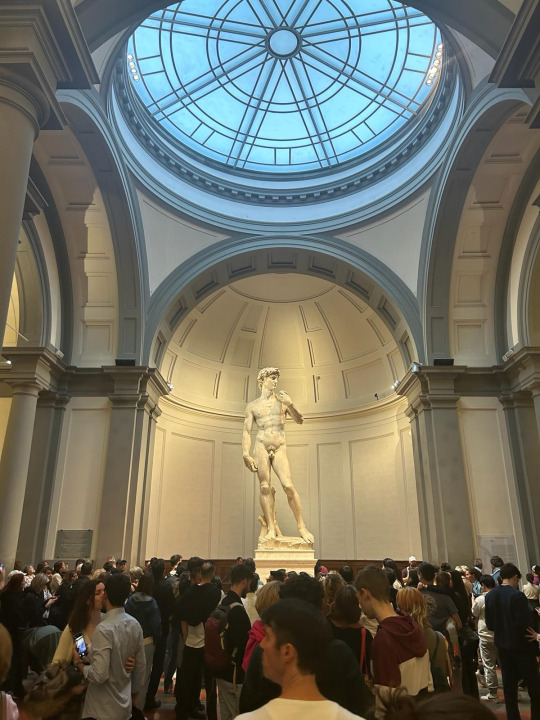
Over spring break, I enjoyed the journey. But simultaneously, I put a lot of unnecessary pressure on myself throughout the week to see all of these things, to collect these experiences. An example: I built myself the narrative that if I didn’t see all 5 of the towns in Cinque Terre, I would have to go back at some point and see them, because something about visiting this place without capitalizing upon the opportunity to take mental snapshots of every view I’ve seen on Google Images didn’t sit right with me. As a result, I think that I rushed through them a bit so I could visit each one in the time I had, which didn’t allow me to fully bask in the energy of any one of them.
Writing this reflection, I’ve landed on this important conclusion: I have to make a conscious effort to live for myself, not for my ego.
The little voice in the back of my head that told me I had to see every village was my ego speaking: “Now you can say you’ve seen it, you’ve collected this awesome experience, you can tell others all about it and keep the memory for yourself and most importantly now you don’t have to return, you can move on to experiencing the rest of the world, because you gotta see it all!”.
The world is an amazing place. There are too many things worth experiencing, and not enough time to experience them. There are going to be beautiful things I'll never see, complex feelings I'll never comprehend, incredible people I will never meet, and that’s something that I will come to terms with.
It’s okay to have this hunger for experiencing the world. In fact, I think it’s one of my strengths. But as I continue to live, I need to remind myself to focus on the the actual process of living, remembering to be gentle with myself, giving myself space to appreciate the fleeting moments and feelings before they're gone.
I've gotten deep all of the sudden, must be the mindfulness club influence or something :). I’ll finish this section with a quote from the movie Good Will Hunting, a favorite movie of mine. It’s not 100% related, but it's pretty topical, talks about the Sistine Chapel and the meaning of life, and I think it's beautifully written. It speaks for itself.
___________
“Sean (the therapist) : [sitting on a bench in front of a pond in park] Thought about what you said to me the other day, about my painting. Stayed up half the night thinking about it. Something occurred to me... fell into a deep peaceful sleep, and haven't thought about you since. Do you know what occurred to me?
Will (the patient) : No.
Sean : You're just a kid, you don't have the faintest idea what you're talkin' about.
Will : Why thank you.
Sean : It's all right. You've never been out of Boston.
Will : Nope.
Sean : So if I asked you about art, you'd probably give me the skinny on every art book ever written. Michelangelo, you know a lot about him. Life's work, political aspirations, him and the pope, sexual orientations, the whole works, right? But I'll bet you can't tell me what it smells like in the Sistine Chapel. You've never actually stood there and looked up at that beautiful ceiling; seen that. If I ask you about women, you'd probably give me a syllabus about your personal favorites. You may have even been laid a few times. But you can't tell me what it feels like to wake up next to a woman and feel truly happy. You're a tough kid. And I'd ask you about war, you'd probably throw Shakespeare at me, right, "once more unto the breach dear friends." But you've never been near one. You've never held your best friend's head in your lap, watch him gasp his last breath looking to you for help. I'd ask you about love, you'd probably quote me a sonnet. But you've never looked at a woman and been totally vulnerable. Known someone that could level you with her eyes, feeling like God put an angel on earth just for you. Who could rescue you from the depths of hell. And you wouldn't know what it's like to be her angel, to have that love for her, be there forever, through anything, through cancer. And you wouldn't know about sleeping sitting up in the hospital room for two months, holding her hand, because the doctors could see in your eyes, that the terms "visiting hours" don't apply to you. You don't know about real loss, 'cause it only occurs when you've loved something more than you love yourself. And I doubt you've ever dared to love anybody that much. And look at you... I don't see an intelligent, confident man... I see a cocky, scared shitless kid. But you're a genius Will. No one denies that. No one could possibly understand the depths of you. But you presume to know everything about me because you saw a painting of mine, and you ripped my fucking life apart. You're an orphan right?
[Will nods]
Sean : You think I know the first thing about how hard your life has been, how you feel, who you are, because I read Oliver Twist? Does that encapsulate you? Personally... I don't give a shit about all that, because you know what, I can't learn anything from you, I can't read in some fuckin' book. Unless you want to talk about you, who you are. Then I'm fascinated. I'm in. But you don't want to do that do you sport? You're terrified of what you might say. Your move, chief.”

the movie clip from the quote
———————
Overall, Spring Break was incredible. As promised, I've made a list. This one is finalized for now, as I won't be going back to Italy anytime soon.
All of Italy Google Maps List (Milan, Asti, Turine, Rome, Bologna, Cinque Terre, Florence)
However, getting back to Madrid on Monday, I felt a big sense of relief. It felt a bit like I was returning home. I was getting tired of eating only carbs for every meal (and not being able to cook). I was so glad to be able to communicate in the country’s native language again — I feel much more comfortable occupying the space of “international student” rather than “tourist”, and I think speaking the language is a big component of that.
I also missed the energy of Spain and Madrid, a feeling I’ll use to remember to really appreciate the time I have left here. It’s going by fast. It’s April now, and before I know it, two months will fly by and it’ll be time for me to go home. Guess we’ll cross that bridge when we come to it.
Thanks for reading, and I’ll see you all next week!
Ciao,
Niko Economos
Aerospace Engineering
Universidad Carlos III de Madrid
Madrid, Spain

1 note
·
View note
Text
Madrid Week 9/10: Viva Italia (part 2… part 1)
Hola a todxs!
Niko back here with week 9 of my study abroad experience. I’m a week late on this one... because last week was spring break (semana santa/holy week, the week leading up to easter)! I was a bit tied up with traveling (which I’ll get into in this blog), so I couldn’t find any time to write. The positive (or negative based on how much you like my writing 🥲) is that I’ll be posting two blogs this week about the trip to make it more digestible, since there is a lot to tell.
So, the week leading up to Spring break was filled with a little bit of scrambling to get all of my stuff done (a paper for Spanish and a presentation for my culture class, which I also think I’ll end up writing a blog about), but once Friday hit, I was free — ready to immerse myself in the true Italian experience 🤌.
The amount of culture in Italy is pretty crazy — I don’t know many other European countries with as many iconic cities as Italy, except for maybe Spain. Beautiful and historically significant places are sprinkled throughout all 301,340 square kilometers, and I think it’s safe to say that I’ve seen a lot of it. Italian fashion, history, wine, geography, and food are also iconic.
It’s also safe to say that I won’t be eating pasta or pizza again for a couple weeks now. I ate primarily carbs for every single meal, and I honestly don’t know how I didn’t end up feeling terribly weak or something like that halfway through due to the lack of protein and nutritious diversity. Quality ingredients I suppose?
Now, I’ll walk through each destination of my break in mini chapters and reflect a bit about each one.
24 hours in Lisbon
When planning out the trip, the cheapest flight that we could find routed us through Lisbon to get to Rome. Seems counter intuitive, I agree, but that’s how it worked out. For the first leg of this trip, I was traveling with one of my Madrid roommates and 3 of his friends that he knew from his hometown.
We had just under 24 hours to get a feel for the city. My conclusion: Lisbon has a wonderful energy. The buildings are beautiful and the narrow streets have a playful way of winding through the city. There are hills in every direction, cute yellow trams bustling about, and the Atlantic ocean is never too far away. I'd already been to Lisbon with my family a few years ago, but it was really nice to experience it from a more grown up perspective.
We went on a free walking tour (pro tip — free walking tours aren’t actually free. Get cash beforehand for tips so you aren’t scrambling to find an ATM when the tour ends [spoken from experience]), listened to a busker perform beautiful Bossa nova (not Portuguese, I'm aware) at an overlook of the city, ate Pastel de Nata (fire af, highly recommend), and zoomed around a little bit on Lime scooters before getting back to the airport to catch our flight to Rome. Pictures tell the better story than I could!
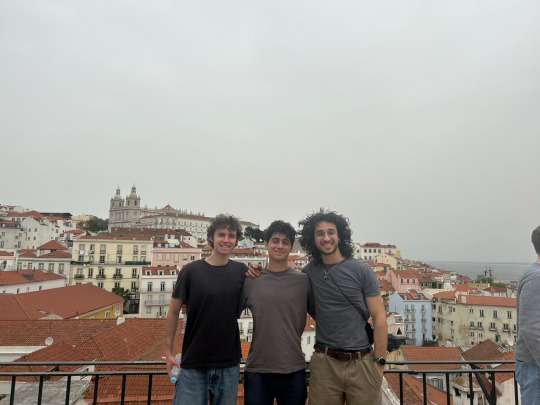

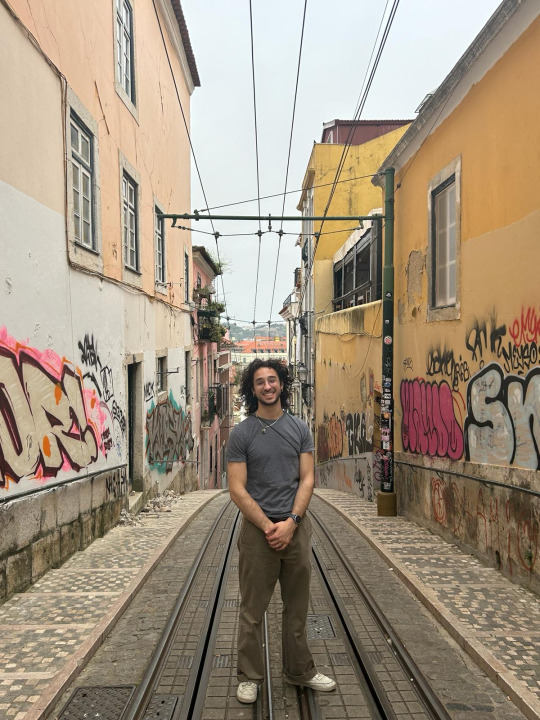
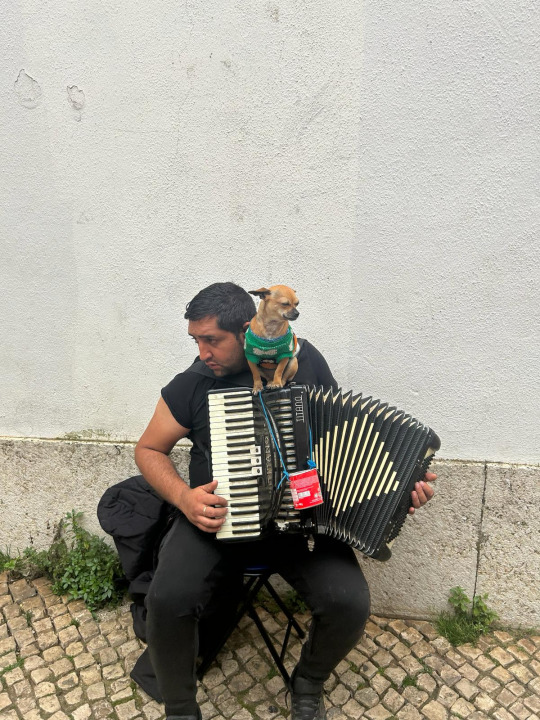
When in Rome
The amount of time we said “When in Rome” or “Hey, Rome wasn’t built in a day” was probably too high to shamelessly write down in this blog, but I don’t regret saying a single one. I mean hey, when in Rome, right?
If you plan on going to Rome, especially during easter, this is the best piece of advice I could give you: book things far, far in advance. I thought it would be cool to book museums and whatnot the weekend before.
Terrible idea. Everything was sold out, and I had to resort to booking expensive tours and second party resell tickets in order to see what I wanted to see. Hopefully, my bank account took the L so that no prospective Italy spring breakers have to. Book in advance from the official websites, and pay the little bit extra to skip the line!! It is worth it.
Rome has an incredible energy that is really enhanced by the history that flanks every inch of it. Anyways, what did I see that I didn't book in advance?
The Vatican Museums/St. Peter's Basilica: pretty insane how beautiful every inch of that building is. Unfortunately, because I was on a timed tour, I didn’t get to fully appreciate all of the art that was in the Museum, but I got a good long while in the Sistine Chapel, which is simply marvelous. The Creation of Adam is truly epic. Michelangelo is the goat. After this trip, I’m a big fan. Michelangelo also designed St. Peter’s Basilica, which I climbed to the top of. It’s also epicly huge and beautiful, and offers amazing views of the city.
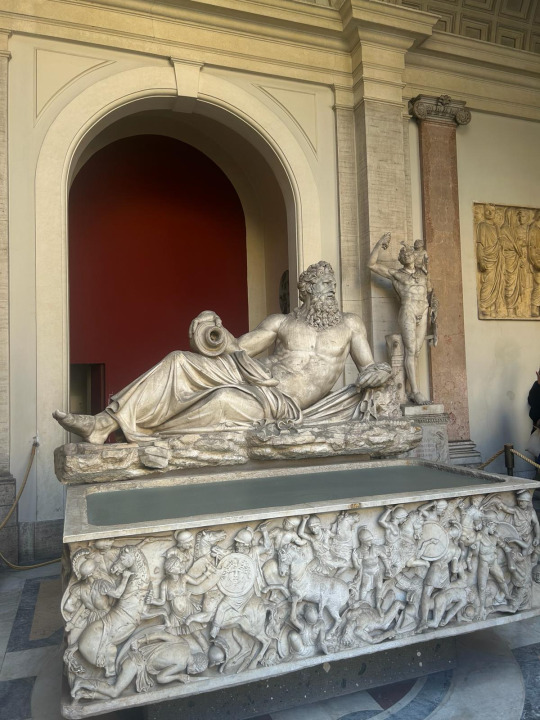




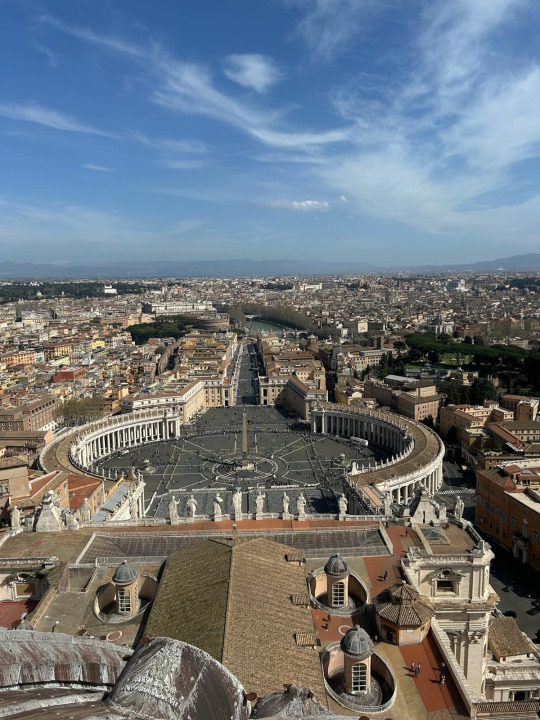
The Colosseum: worth going inside — especially if you have a good imagination. Looking down at the arena floor, I imagined gladiators brutally fighting to the death with bloodthirsty Romans sneering and cheering them on from all sides. That happened right where I was standing. Even a peasant in the nosebleeds would have been close enough to the action and seen the killing in gruesome detail.
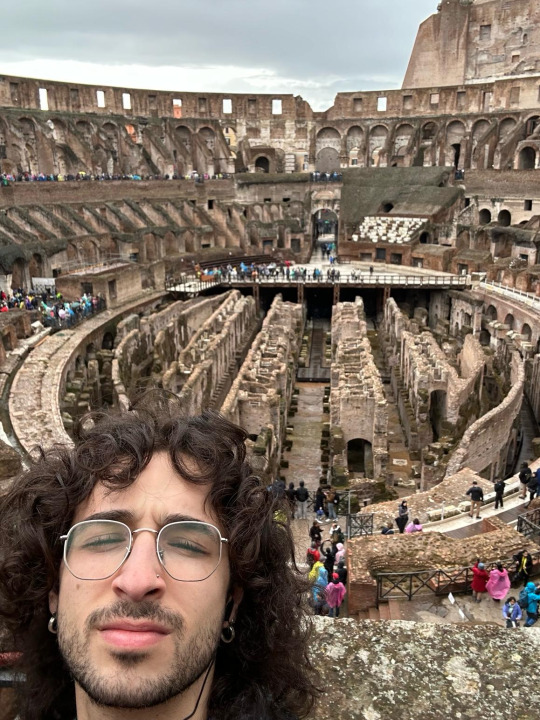
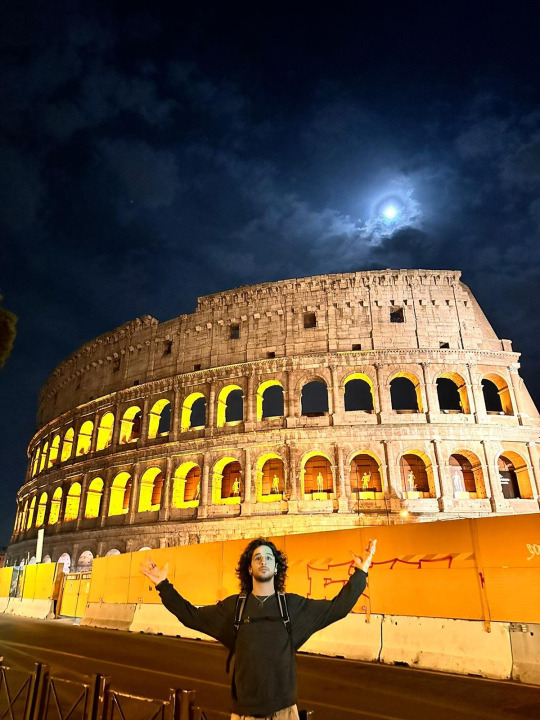
The Roman Forums: also a big imagination thing. Imagining standing in the center of Rome, massive white marble buildings towering above, cheering peasants on all sides, while the Roman emperor parades through the streets with golden chariots filled with riches pillaged from far away lands.
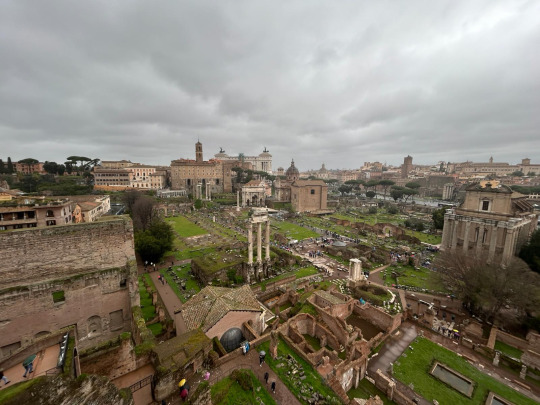

The Borghese Gallery: Probably my favorite thing in Rome. The pictures speak for themselves, some of the most impressive sculptures I’ve ever seen in my life (close tie with the David in Florence).
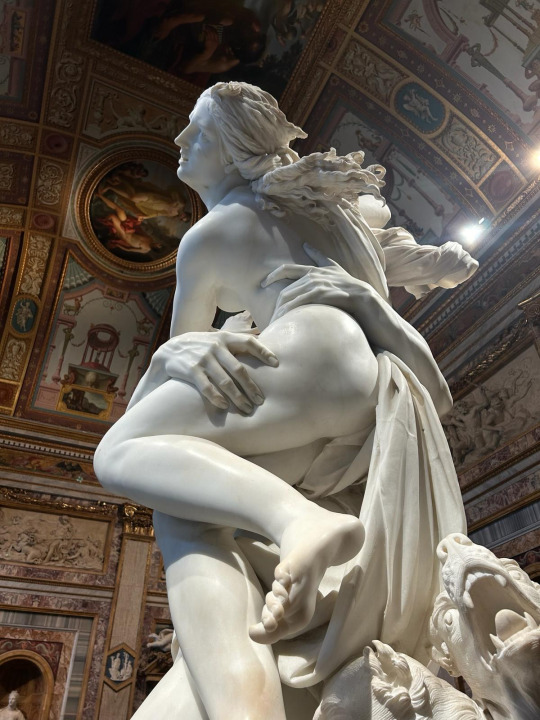
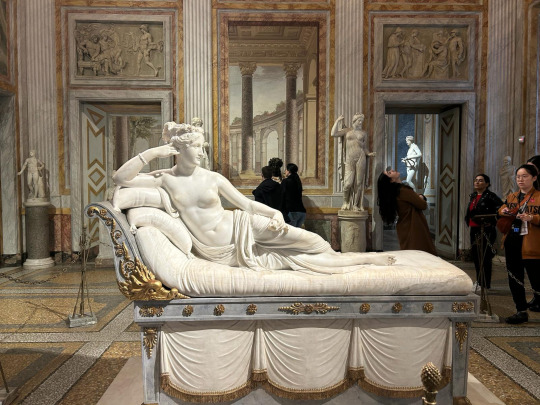
The Pantheon: It's crazy how old this thing was (like 2000 years), and how good of a condition it's still in. That's what happened when you transform a pagan temple into a church, I guess.


Rome itself: Rome is also filled with beautiful, free to access public Piazzas and monuments that are also worth visiting. There is a distinct vibe to each neighborhood, tons of delicious food, cool sunset spots, and good vibes both day and night.


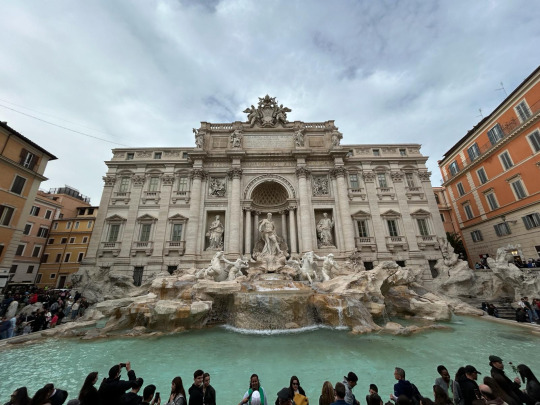
My best recommendation for truly experiencing the epic history throughout the country? RICK STEVES! Rick Steves has audio guides for almost all the biggest tourist attractions in a ton of Italy (and the rest of Europe!) His guides are funny, help you visualize, are super informative, and most importantly, FREE! Using his guides really added to my experience, I listened to them every chance I got. Click here for his Italy guide.
On Tuesday, the friends that I came with left to see other parts of Italy I hadn't planned on visiting, while I took an extra day to explore Rome. I engaged in some Solo-traveling (my first true solo travel of the semester), and my confidence in spending time alone and building connections grew. I stayed in a hostel for two nights and ended up meeting a fellow solo traveler, who happened to be Argentinian. We formed a meaningful connection, and shared mate on Thursday morning — a custom I really missed from my time in Buenos Aires.
Fire-nze 🔥
For those of you who didn’t know (I didn’t before going to Italy) Florence is called Firenze in Italian. Not sure where that distinction came from. But I like it.
I stayed with a home friend of mine, Shea (she stayed with me in Madrid a few weeks ago) who is studying there for the semester. I spent four days in total in Florence, two of which I used to take short day trips to nearby cities.
Florence is the birthplace of the Renaissance. As a result, the museums there are pretty insane. The Uffizi has the most impressive collection of Renaissance paintings, probably in the world, with works from Michelangelo, Leonardo da Vinci, Raffael, and more. The Rick Steves tour is great for this one.
The Accademia is home to Michelangelo’s the David. More about how seeing it made me feel in the reflection section. But it’s epic.
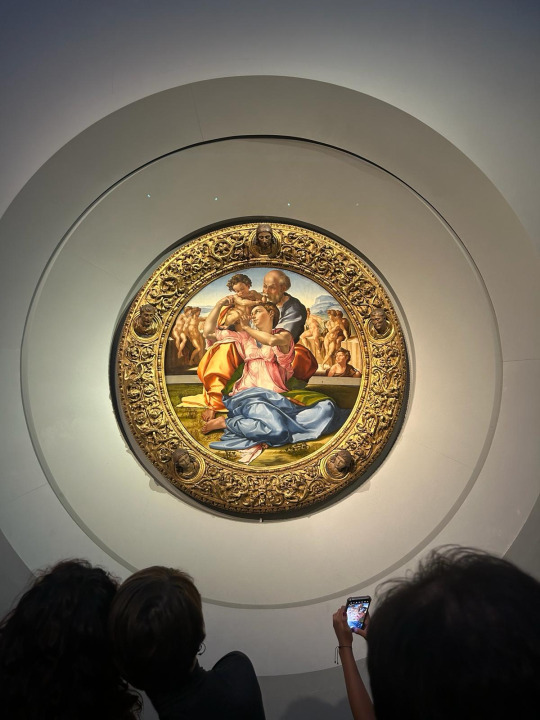
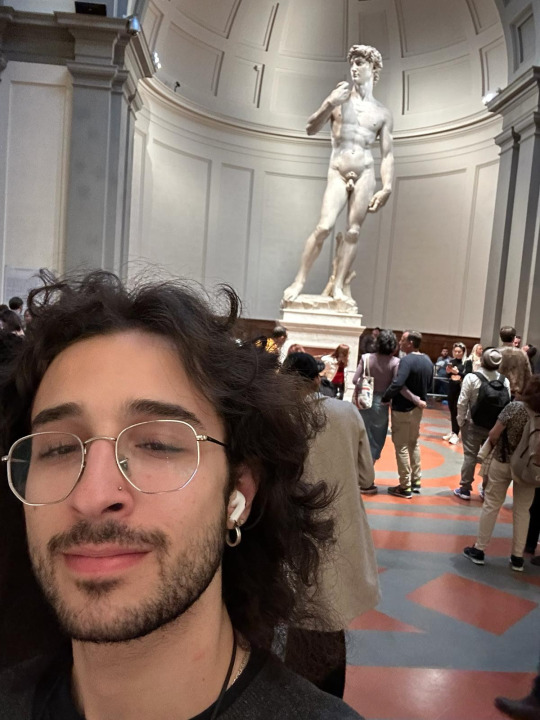
Florence also has a pretty insanely huge church, the Duomo, and the story about how it was designed is also crazy. In conclusion, the Renaissance men are goated. They were literally good at everything, art, sculpting, engineering, architecture, you name it, they could do it. How I’m tryna be for real.
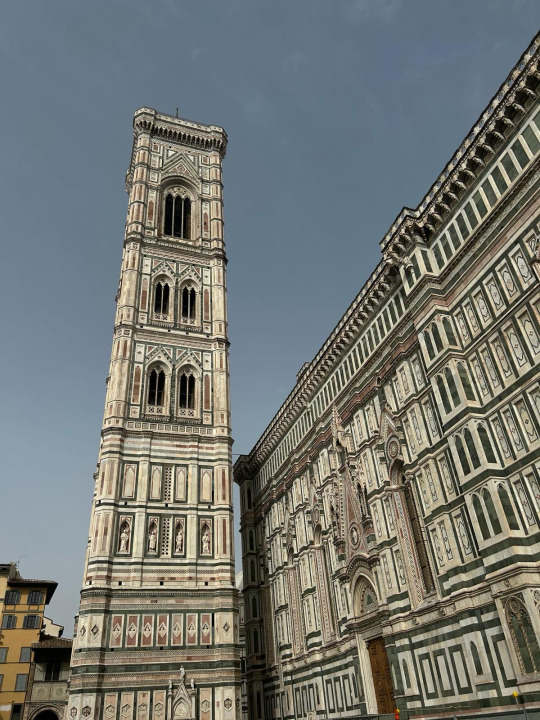
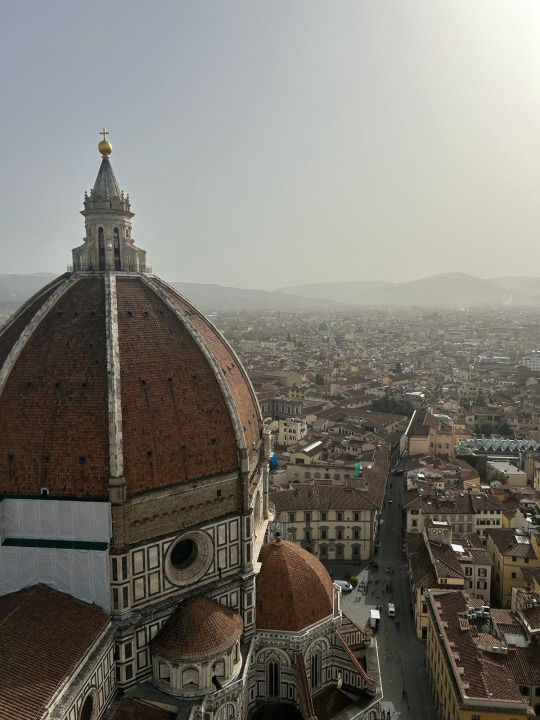


Going ta’ Bologna (I tried to make it rhyme i'm sorry)
My day spent in Bologna was one of my favorites this trip. I took a day trip there alone from Florence, a quick 1 hour train ride. Bologna has an amazing vibe. It smells fantastic everywhere (food markets, soap shops, flowers, etc. Beautiful.). It felt really local. There were a good amount of tourists, but Italians far outnumbered them, which was a different story from Florence and Rome, both of which were pretty overwhelmed (especially true in Easter week).
Bologna is also a University Town, so it was filled with young people and overall had a great energy. I spent the day just exploring, eating (I had the best lasagna of my life. Bologna is known for its food scene and it did not disappoint. Ever heard of spaghetti Bolognese? Yeah.), and did a mini pilgrimage to see a cool monastery on a big hill. Fantastic vibes overall, 100% would recommend seeing.
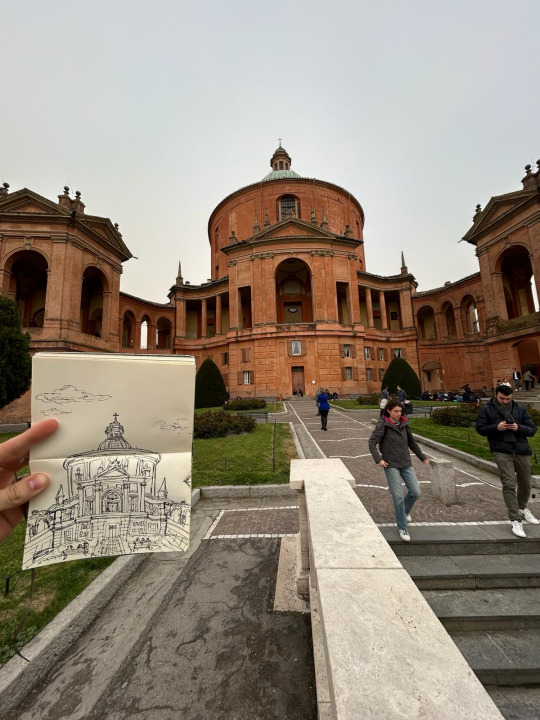


_________________
I would have included more pics, but I was limited by tumblr lol. I’ll discuss the rest of my trip and some big reflections I took away from it in the next post I’ll make soon! If you’re reading this after I’ve already posted all the blogs, you can find the next post here.
Ciao,
Niko Economos
Aerospace Engineering
Universidad Carlos III de Madrid
Madrid, Spain
0 notes